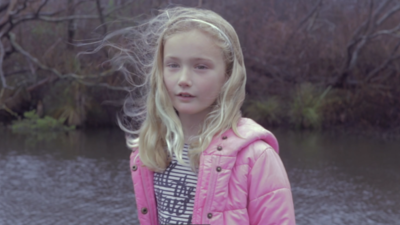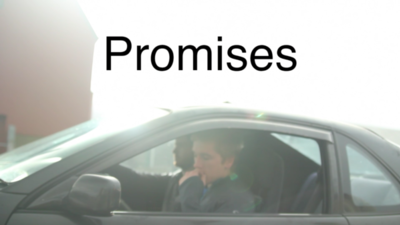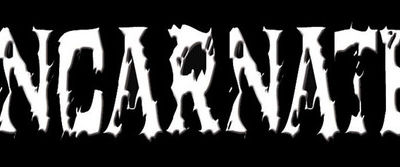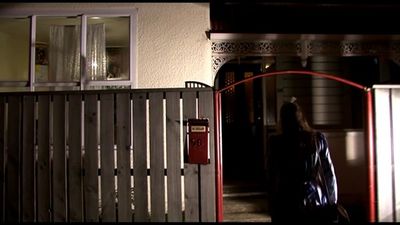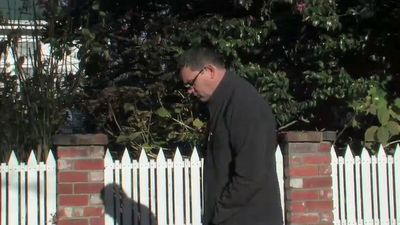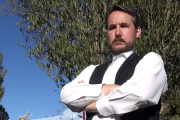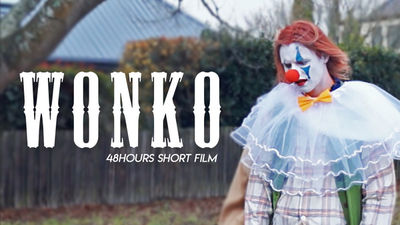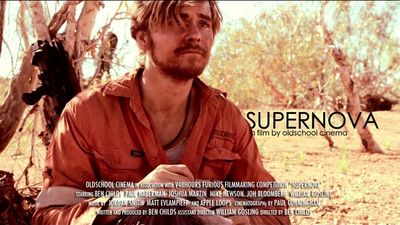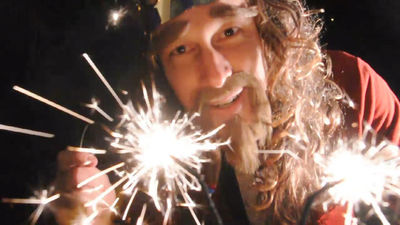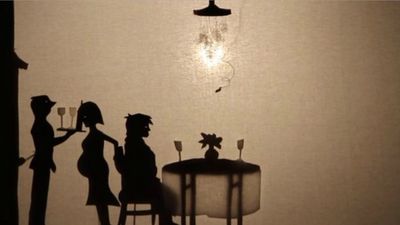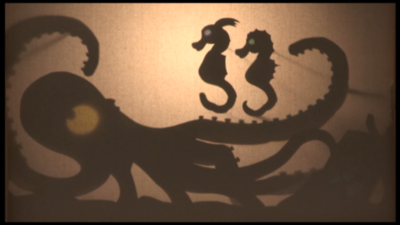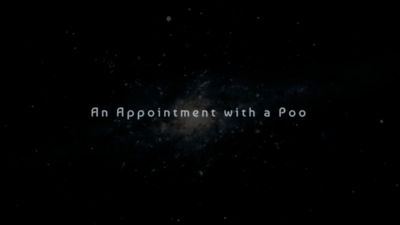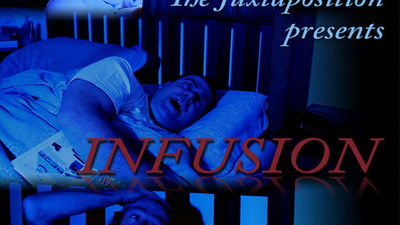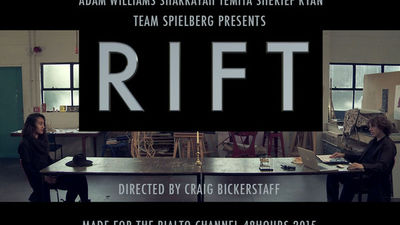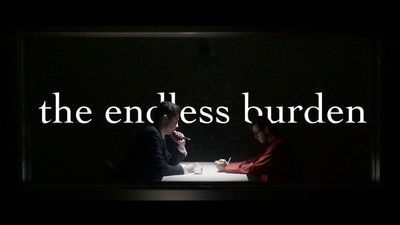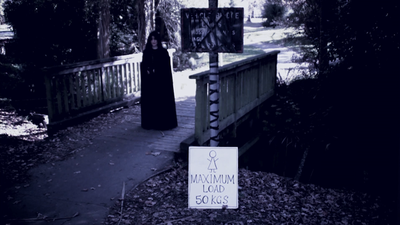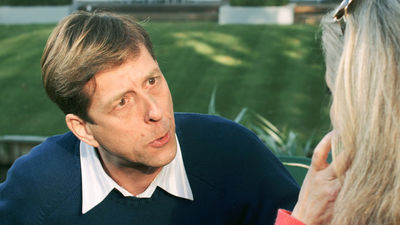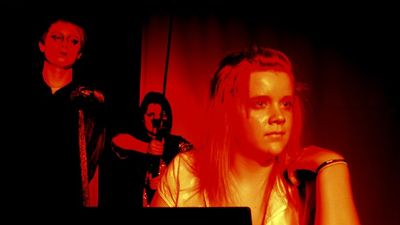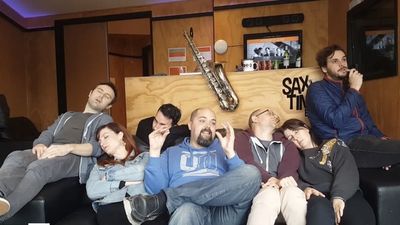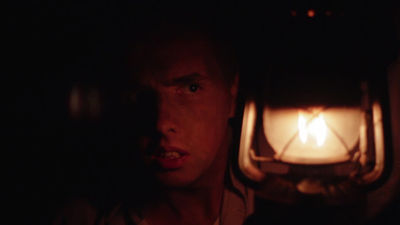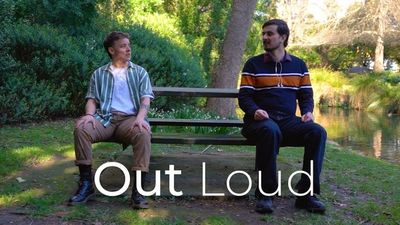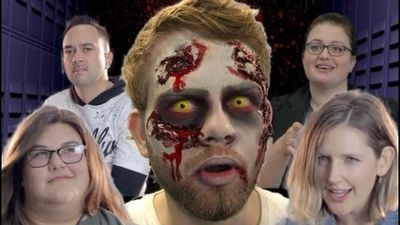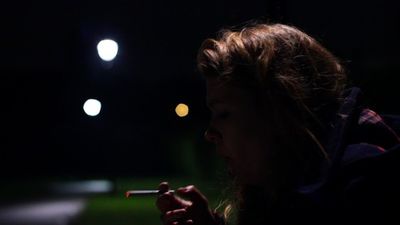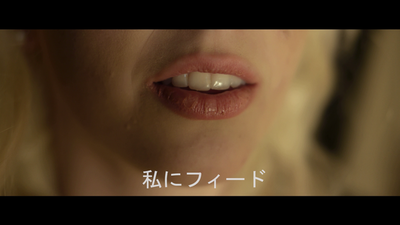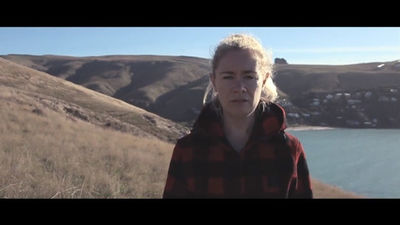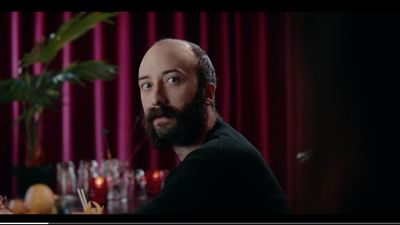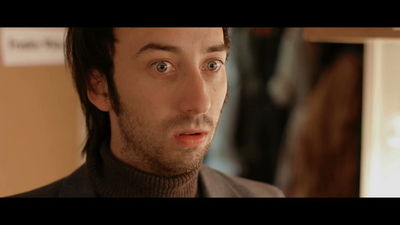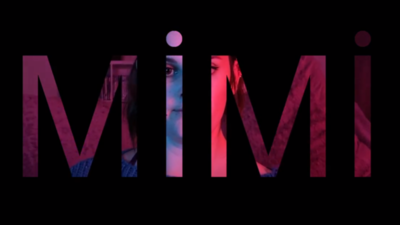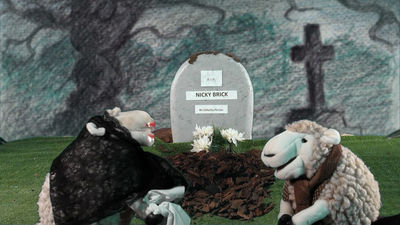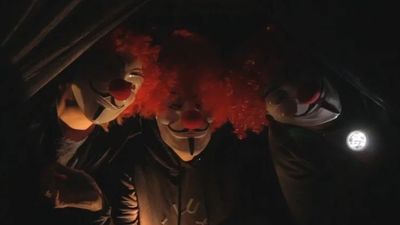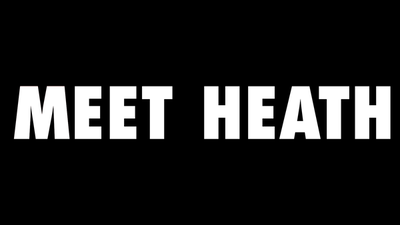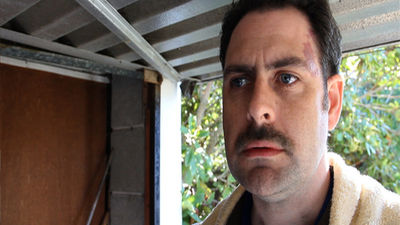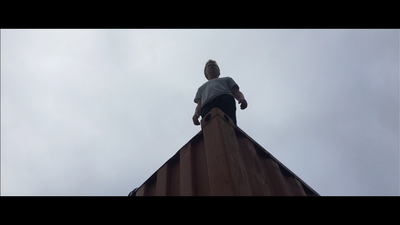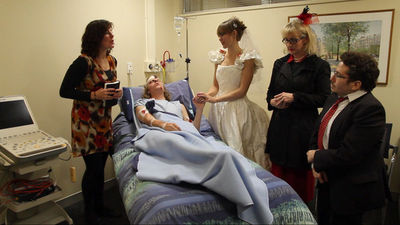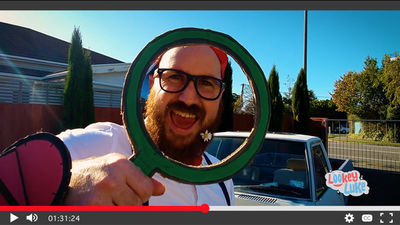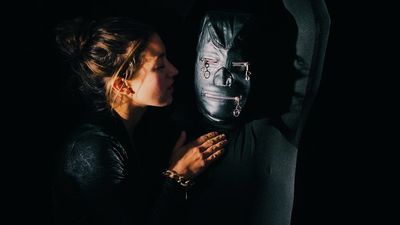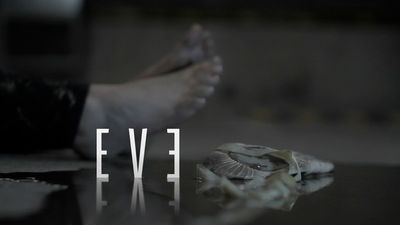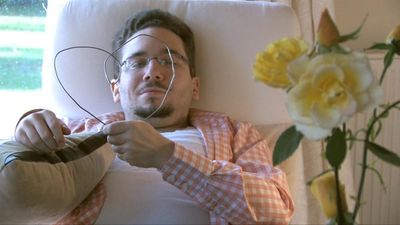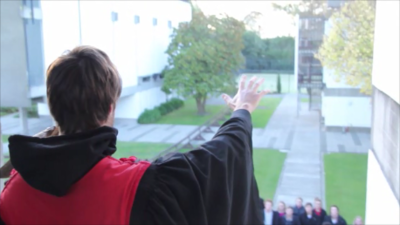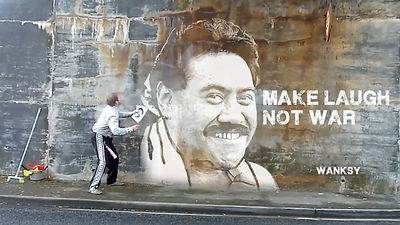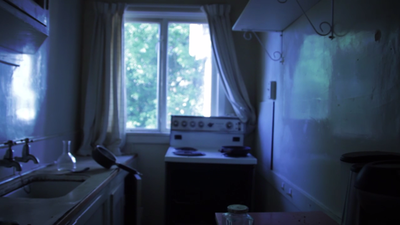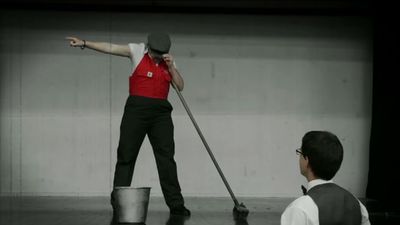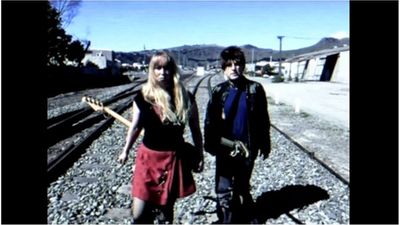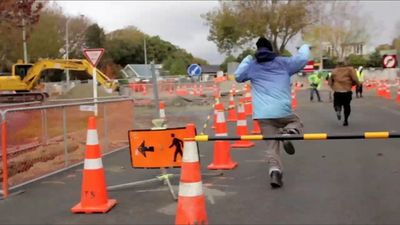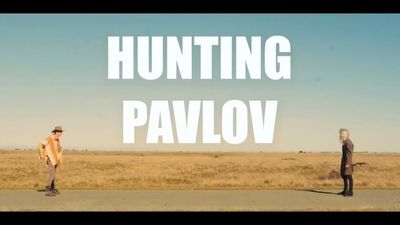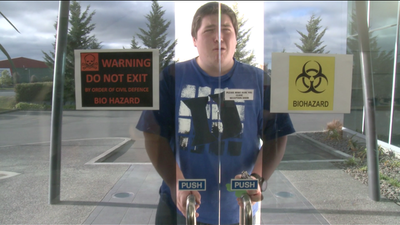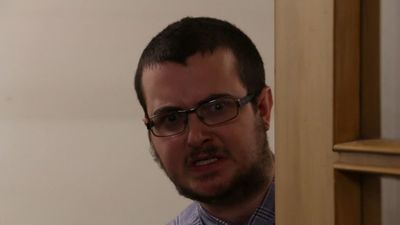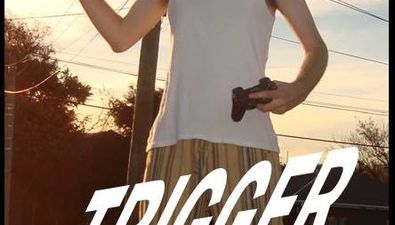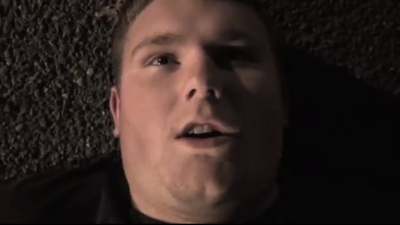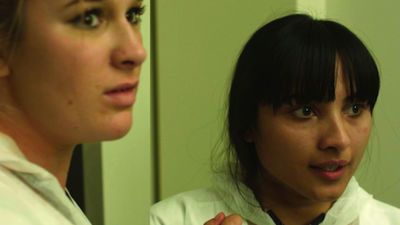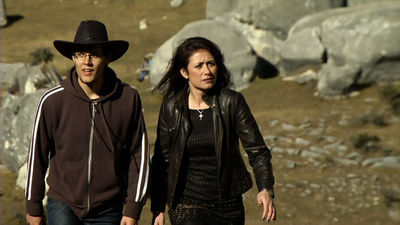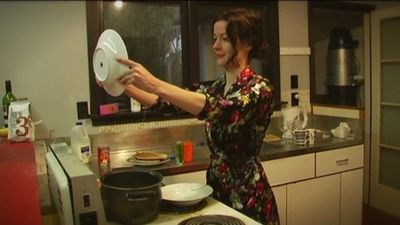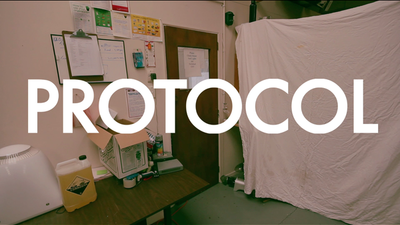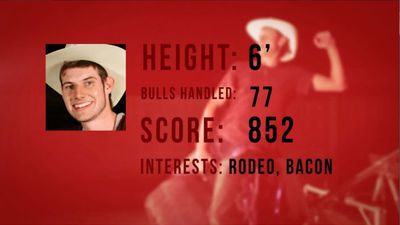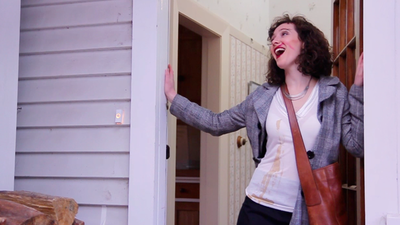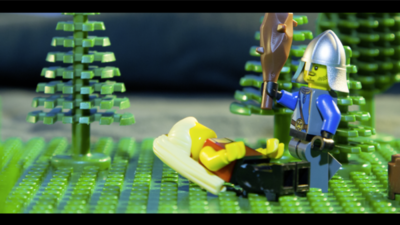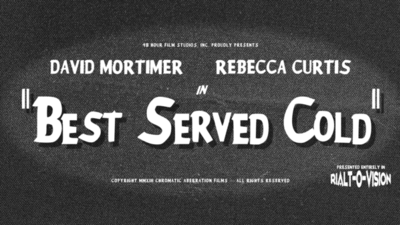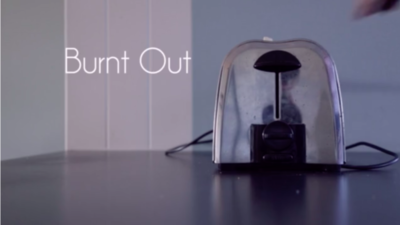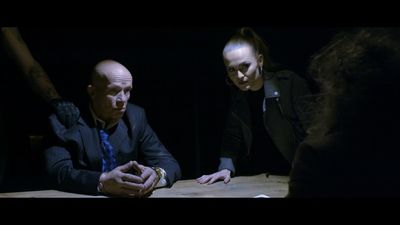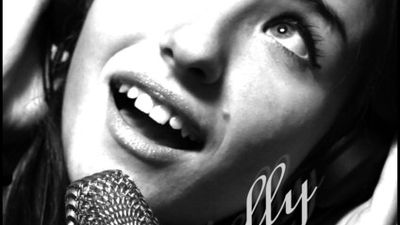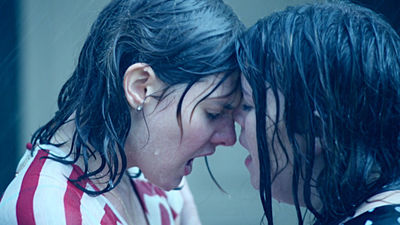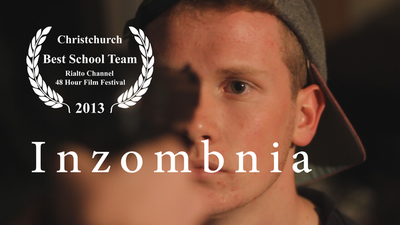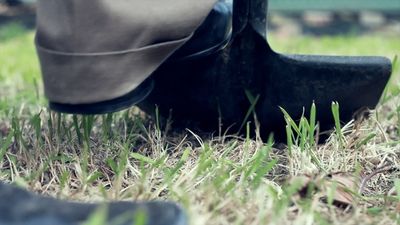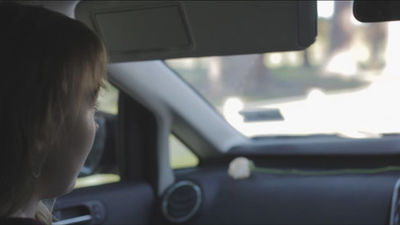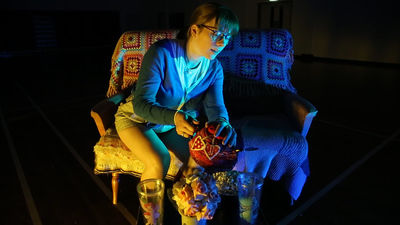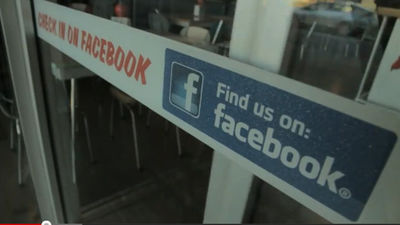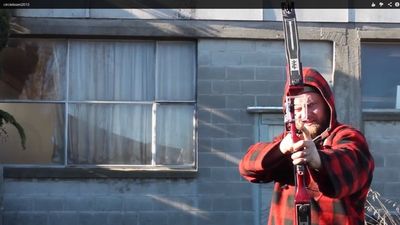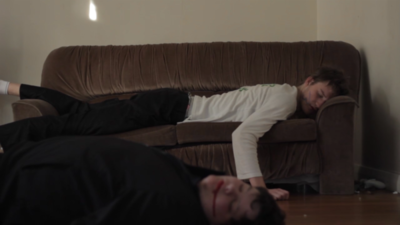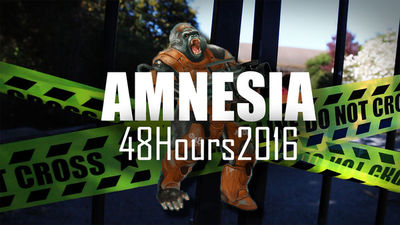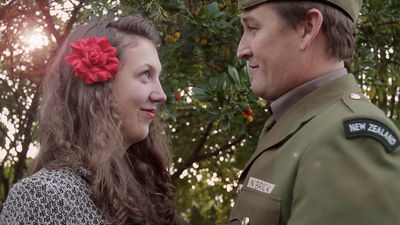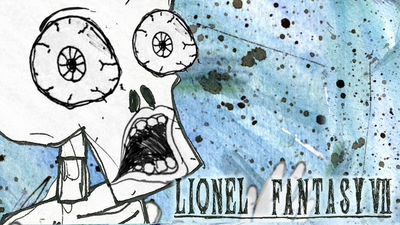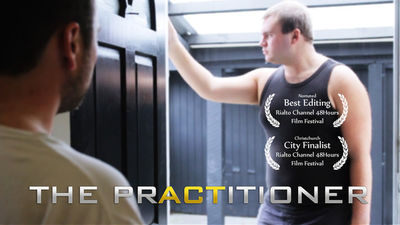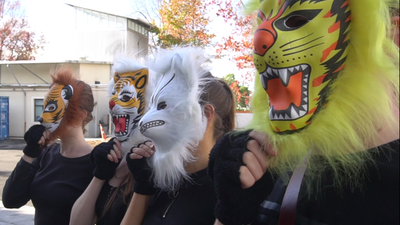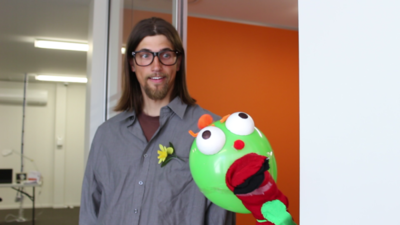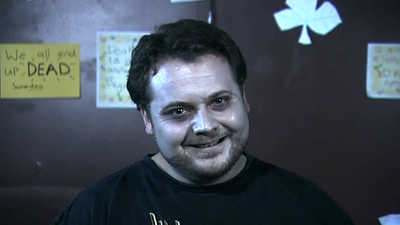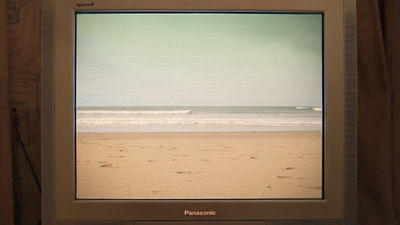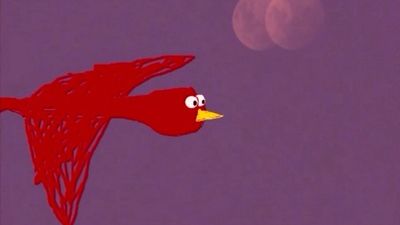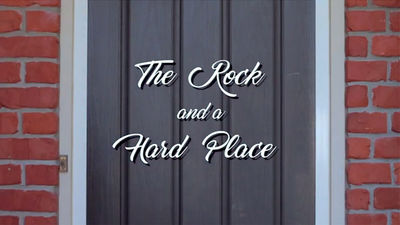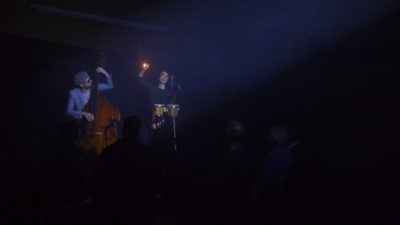 TheNimbleMarmoset
TheNimbleMarmoset
1 Entry and 169 Reviews
Entries

Basket Case
Sabina Colada
Reviews
Now You See Me, Now You Don't
What a lovely story, simple and uncluttered and elegantly told, almost entirely without dialogue. We see a girl playing with her imaginary friend in various settings, and while it's quite sweet, there's also a sort of sadness about it, something you can't quite put your finger on. I was pretty sure there was going to be some sort of twist or reveal coming, although the stuff I had in mind was quite different to what we got. And what we got was a knife being stabbed into our hearts and twisted around. If I'm looking for criticisms, I can maybe find a few minor things to quibble about. The 'rules' of the imaginary friend felt slightly variable in terms of what we were seeing, although perhaps that's just me missing some things. The final scene with the magic trick was momentarily confusing in terms of timeline, although the sepia filter helped to establish the flashback nature of it. One thing I really appreciated was how much they trusted the intelligence of the audience at the end, specifically in terms of just showing the photo and trusting that we'd see the tube feeding into the girl's nose and put two and two together, without having to spell it out. The crushing nature of that end reveal is interesting also in that it takes you a few beats to first assemble what the reality is, and then contemplate what the ramifications of that must be for the girl, for the girl's parents, and so on. (Also, I only just realised this was in the Buddy Movie genre - fantastic interpretation!) This is probably the closest the team have made to a spiritual successor to their classic "Polaroid", and that's very much meant as a compliment. I enjoy all the flavours of what Submission Impossible can do, but there's something special about their ability to set up a platform then knock it down in an emotionally raw and affecting fashion. Great stuff.
Promises
One of the oldest and most popular tropes in the Crime genre: just one last job – what could possibly go wrong? This was a slick and stylish production, with a simple, focused narrative and some great action sequences. The use of the underground carpark space was again a good use of a familiar element of the genre, lending a sense of claustrophobia to the environment. The backwards tracking shot of the two guys running away through the carpark looked incredible. And in four heats of viewing I saw a lot of silly fight sequences (as boys in front of cameras are wont to do), so it was refreshing to see a piece of hand-to-hand combat choreography that I really believed. What’s more, this sequence incorporated the film’s required slo-mo effect, and yet the apparent contact looked plausible (because, as I later learned, there was actual contact going on – pro-tip: if you want to convince an audience that you’re punching someone, actually punch them). The coda of the film with the sniper felt a little bit tacked on, and was probably a bit condensed and hurried due to the 7-minute time limit. Also, I think the structure was teetering a bit between being a single-location story and a broader multi-scene crime thriller, and I would have liked to see it settle on one or the other. As it was it was almost single-location, and maybe a bit more time could have been spent holding the tension of the carpark rendezvous, and keeping us in that claustrophobic space as long as possible. Still, these are minor quibbles, and overall there was plenty to love about this short.
Incarnate
We opened with an ordinary and somewhat comic scene at a bar (complete with a rather incongruent "did you hear that?" fart gag - this actually filled me with childish glee, since it was the only time I experienced this particular 48Hours drinking game element across all the films I saw this year). The scene goes on much longer than it needs to, but then our main guy goes out to his car, which is getting broken into. A brief confrontation with the criminals results in a pretty damn brutal group assault on our protagonist, and hence ends the setup for this Immobilised genre story. Left bedridden, our hero speaks to a very silly-voiced character on the phone. It is some urban legend about him being the guy you call to get revenge on wrongdoers. And so, um, there is some kind of bargain made, and righteous carnage ensues. It all gets a bit horror-slapstick at this point, with a few nasty attacks/murders, and that's pretty much the end. So in summary, an overlong beginning, a promising middle, and a slightly confusing and inappropriately comedic ending. Actually the tonal shifts were a big part of the problem here, with the film never being quite sure what it was. The assault in the carpark was filmed very artfully, and I loved the moment when the girlfriend/wife came outside, and we saw the reaction written on her face (speaking of whom, such a shame we never saw her again - it would have been interesting to see her instigate the revenge). I would have loved for the filmmakers to have committed to this darker tone in the second half of the film. I think the main lesson here is to stay focussed on what the core story is that you are telling, and to not let unnecessary elements (the bar scene at the start, for instance) get in the way of that, nor to lose track of what style or mood you are trying to evoke. Because the few moments in the film that really worked for me worked really well, and it would have been great to see more of these.
Dream Castle
Okay, so it’s the one-shot film of the heat. Style from the get-go, camera following a girl into a house, atmospheric electric guitar music providing the entire sound-base, setting up a dream-like quality to the thing. The camera peeks into rooms off the main hallway, and its like we’re stumbling upon some mad convention of freaky cults, everyone white-masked up and staring blankly towards us. The whole affair feels like it could be an outtake from “Eyes Wide Shut”; no idea what is going on but it holds, it’s mysterious, you can’t help but keep watching as we’re drawn further and further into this macabre house party. And then, well, normality punches you rudely in the face. The song fades out, our girl meets another girl, and they talk about some, er, stuff. An ex-boyfriend maybe, dunno, couldn’t really hear anything. And then, a few minutes later, almost as if the film has now realised that the dialogue thing was A Bad Idea, the characters run back the way we came, do some strobe dancing with dodgy masked people, and the guitar music returns to play us out. However, by this time the magic has been broken and can’t be repaired. Ironically, this film told more story when nobody was talking, and I think that’s a good general lesson for 48Hours (a.k.a. “show, don’t tell”). Oh well, I was utterly enthralled by the first few minutes anyway, and it was probably a fun party too.
Kinky, Minx and Cowboys
Slow, low-key start to this rom-com, with the girl talking to her mum about her love life. Then cut to a hot date on a park bench, with some vaguely awkward coffee froth on upper lip carry-on. Then the guy said or did something, not sure what exactly, but it was clearly a Big Deal. Which brought us into the classic two-thirds-through nadir of the romance narrative trajectory, where we met the guy's best friend offering advice, which guy seemed oddly reluctant to take (although to be fair, that armchair did look awfully comfy). Then it was onto the girl's place to make up, but the girl's mum rebuffs him. Then the guy's BFF and the mum get it on, via shared interests based around a mildly inventive interpretation of "ex-bully", and things get a bit more interesting from there on in. Actually, turns out that this silly b-couple is far more interesting than our ostensible main characters. Still, when the girl decides to go get the guy back things kick into gear, with a nice action sequence of her running down the road set to some pumping music. Overall, there were way too many standing around / sitting around talking scenes, not enough 'doing' going on. Also, plenty of rom but not much com until near the end. Still, fun was clearly had in the making of this.
Hopeful Gardens
A troubled woman makes increasingly desperate attempts to gain entry to the titular "Hopeful Gardens", a religious commune/cult with a well-chosen name that pretty much does the exposition heavy-lifting for you. I was never quite sure why she wanted to get in there - a scene early on with her young son almost suggested something, but then he was written out when he went off to his dad - but the journey was mostly entertaining nonetheless. Black Comedy is an interesting beast of a genre, and I imagine quite a hard one to figure out how to tackle. This piece clearly has religious topics centrally in its sights, but it also dabbles in other vaguely taboo matters, such as parenting, suicide and #ponytailgate. There were some enjoyable moments of comedy throughout the film, especially of the visual variety - the sequence of getting kicked out of HG repeatedly, literally head-over-heels on many occasions, was entertaining, and I especially enjoyed the small puddle that a passing car converted to a couple of buckets worth of water to douse our protagonist. On a couple of occasions I felt that there was a comic set-up which didn't get a proper payoff - that kicking-out montage for instance, I craved a break in the routine or some other kind of unexpected physicality at the end. Similarly, the ending sequence under the credits seemed to promise a visual punchline that never arrived (actually, I suppose the comedy death-face at the end was a kind of punchline, but it was a bit 'soft' for the time it took to get there). Overall, I found myself frustrated by the lack of a clear sense of motivation for Bethany, because since I wasn't clear what she wanted or was trying to achieve, it was hard to care about what happened (it also probably didn't help that her story felt more stopped than resolved at the end). But those quibbles aside, I enjoyed the performance of the main actress a lot, and the plausibly wholesome/creepy scenes in the cult-y Hopeful Gardens were handled well (and a nicely effortless incorporation of the bread, too).
Wonko
In which we have a tale about, um... how self love can improve your mental health? This was one of the more curious entries in Heat 8, but curious in a way that stuck in the memory. The rapidly cascading fonts for the "Wonko" title card was a nice flourish to start thing off, after which we met the (presumably) titular character, a sad clown moping about his life. He lives alone, always wearing clown costume and makeup. He goes to the supermarket, but is demonstrably "other" from everyone else, with a sort of Midas touch thing going on where everyone he touches gets overcome with uncontrollable rhythmic laughing (directed at him). He sings a song on his way home, with the rest of the cast dancing around him. He goes home, and eventually we arrive at an unexpected but memorable clown confetti cum climax to the story. The story itself is kind of vague, and I couldn't exactly tell you what was happening at all times. I interpreted Wonko's clown-ness as metaphor for feeling different and separated from other people. I loved the stylistic choice of how the people moved their bodies after they came into contact with him - the jerkily rhythmic movements reminded me quite a lot of that ridiculous (but also can't-stop-watching) Skibidi music video. That stylisation was cool, and I kinda wish we could have seen more of that sort of thing. There was only really one song in the film, handled as a single shot following the character walking, with other people dancing around and behind him. It was a simple idea but worked quite well to establish his state of mind. The party popper cumshot itself was, despite my crude descriptions, actually rather artful, almost beautiful. There was an odd lingering shot early on when the POV camera moved from keys in hand to computer screens and back; I guess meant to show his dilemma of whether he should go out and interact with the world, or just stay home and live online. Which I guess ultimately was the thesis of the film, meaning that where it's ended was actually quite a nice variation on what you'd expect: no, sometimes it's okay to just stay at home alone and take care of after yourself. Maybe. Anyway, lots of intriguing moments and elements here, and going forward I'd encourage the team to stay playful with their filmmaking, and lean even more into the weirdness.
Dream Castle
Okay, so it’s the one-shot film of the heat. Style from the get-go, camera following a girl into a house, atmospheric electric guitar music providing the entire sound-base, setting up a dream-like quality to the thing. The camera peeks into rooms off the main hallway, and its like we’re stumbling upon some mad convention of freaky cults, everyone white-masked up and staring blankly towards us. The whole affair feels like it could be an outtake from “Eyes Wide Shut”; no idea what is going on but it holds, it’s mysterious, you can’t help but keep watching as we’re drawn further and further into this macabre house party. And then, well, normality punches you rudely in the face. The song fades out, our girl meets another girl, and they talk about some, er, stuff. An ex-boyfriend maybe, dunno, couldn’t really hear anything. And then, a few minutes later, almost as if the film has now realised that the dialogue thing was A Bad Idea, the characters run back the way we came, do some strobe dancing with dodgy masked people, and the guitar music returns to play us out. However, by this time the magic has been broken and can’t be repaired. Ironically, this film told more story when nobody was talking, and I think that’s a good general lesson for 48Hours (a.k.a. “show, don’t tell”). Oh well, I was utterly enthralled by the first few minutes anyway, and it was probably a fun party too.
Supernova
Wow, what a way to end the heat. With a good story, nice performances and some gorgeous cinematography, this film easily outclassed its stablemates in Heat 7. First of all, let me just say that if you’re looking for a decent location to film an End Of The World movie, you really can’t do better than the seeming desolation of Western Australia. My mouth got dry just watching the thing, a really visceral connection with the audience was created. Even nice little touches like the man at the end having sand covering his face, it all added a fantastic texture. Perhaps my only gripe would be with the brief shot of the girlfriend/wife reading the letter back in New Zealand, because the room she was in just looked a bit too much like your average modern white-walls flat, and somewhat broke the illusion of a bleak future. But that aside, there really wasn’t much to fault here. A simple story, but evocatively told and with terrific cinematic flair.
Bric-a-Brac Mountain
The heat was rounded off in balmy style with this year’s offering from The Otter. This team have developed a bit of a cult following in Christchurch 48Hours circles, due to their unique approach to storytelling, humour and, well, logic (although I hope they don’t feel obligated to keep making the same types of films due to these expectations). This year didn’t disappoint, giving us a touching cross-species romance story as only Otter could provide. The eponymous house is filled with kitsch ornaments and other assorted bric-a-brac (although given the title I found myself wishing that there could be more of it on display, and for it to perhaps be a bigger part of the story). A cat answers an ad for a new flatmate, and man and feline become close over time. When the cat offers a little white pill to the guy, things turn ever weirder (tripping sequences in most 48Hours films tend to look like the normal bits of an Otter film, so Otter-tripping is another level entirely – pro-tip: if you’re stuck for a way to incorporate the prop element, just have it hover and talk). I think there was a bit of body-switch thrown in there for good measure too. And when the cat’s owner (wow, what the hell was that thing? My mind couldn’t quite process what I was seeing) arrived to collect it, we knew for sure that the man/cat bond had grown strong, truly inspirational stuff. One thing I love about Otter is their preposterous use of voice-on-a-microphone sound effects, such as the “bing! bong!” doorbell and the mariachi musical meows when we first met the cat. So yeah, this film was easily the biggest and most consistent generator of laughs from the audience in the heat, and not surprisingly became winner of Audience Favourite. (EDIT, TWO DAYS LATER: Ha, I only just got the pun of the title. Sorry, a bit slow here. :) )
Sleep on a clothesline
An intriguing concept for a Musical here, with some beautiful artistry on display. I don't know if the shadow puppets were made on the weekend or you had them already, but there were some lovely details in them, and competent use of the medium. The only downside with this was the similarity with last year's city winner, and so the impact was diminished somewhat. The first shadow scene with the two lovers meeting felt very slow, with not much happening for quite some time, but thankfully the subsequent sections were a lot more dense with fun ideas. Musically this was quite an accomplished piece. Both the music and vocal stylings reminded me a bit of Greg Johnson, and I suppose his brand of smoky late-night pop-jazz is entirely inappropriate for a story about an insomniac. I felt the songs were sometimes a bit too similar to one another, and so the whole thing often had the feel of a song cycle, rather than a strong narrative with forward momentum. And the device of the tarot cards, while interesting, meant that the energy of the story kept getting reset back to a neutral state at the end of each song. Also, I didn't quite get the whole Uno 'Skip' card thing at the end - am I missing a joke here? So yeah, as a unified piece it didn't quite hang together for me, and yet all its parts were really well made. And it is a rarity to have a 48Hours musical that seeks to take a relatively serious tone, so well done for mostly committing to that.
Mr. Breadins
It's always nice when you get a 48hours team with a uniquely idiosyncratic flavour, like an old cardigan that you slip back on. You know. Anyway, for me Otter is this probably more than just about any other Christchurch team. Their style is perhaps best exemplified by the casual matter-of-factness of the bizarre shit that goes down in their films - for instance, a grown man consulting a handmade cat-doll inside a human mouth via computer screen, as ordinarily as you might call your mum on the phone. So it's a one-room film (didn't actually realise this til later), full of silly, faux-ye olde dialogue and an ornamental manservant (squirrelservant?). I really enjoyed the take on the ex-bully required element, with Bobby fighting desperately to suppress his urge to physically abuse his subordinate. The cat was his guru for gentlefication, and the highlight for me was when he took some chill caplets, sending him into a psychedelic, primal screamy psycho-sequence, like a Pink Floyd promotional film circa 1969, then abruptly cutting to him calmly stating that he feels much calmer now. Also a great squirrel-cam fight sequence, but more than anything else, this is a film about the perils of grown men smoking light cigarettes. Probably not quite as accomplished in its stupidity as last year's "Time-o-saurus", but nonetheless another triumph of measured daftness.
An Inconvenient Hoof
One way to stand out from the 48Hours crowd is to produce a film using an unusual technique, and the decision of this team to tell a story using shadow puppets certainly did the trick in this respect. But happily once we got past the novelty of the style, the production values and the story held us through to the end. The film also presented a neat interpretation of End Of The World, since an undersea drilling endeavour would certainly spell the end of the world for most little critters living nearby. The story itself was very funny, but then also surprisingly affecting, a really nice balance of mood. The voice actors all performed well in varied ways, and vocal differentiation is especially critical when there are few other markers to tell the characters apart. The craft of the made puppets themselves was fabulous, with some great little details like the differently coloured seahorse eyes and the bubbles rising up (timed to a bubble sound effect). This was a case where seeing the ‘wires’ actually sold the effect better than if it had been more slick, and all-in-all this was a brilliant little film, showing off its homemade stripes and a joy to watch.
An Appointment with a Poo
Things begin with establishing shots of a literally cosmic scale, downsizing to a fancy aerial flyover shot, to a shot of a house, to a hand-held fish-eye POV, and eventually to a micro scale, where we meet our characters: two flies. And it eventually turns out that the scale-shift at the start isn't just a fancy effect, but also kinda sorta relevant to the deep philosophical questions being discussed by our dipteran protagonists. But before we get to that heavy matter, the conversation first focusses on matter of a more fecal variety, as one fly is keen to find a pile of poo to feast on. The chatter swings from such base topics to existential considerations, and one of the flies thinks he may have cracked the secret of living beyond their one-day life cycle. One of the first things you notice in this film is the effect used for the flies - they are simple, cute and colourful toys essentially, but puppeted via greenscreen to excellent effect I thought - even the shadows mapped well onto the background. Even more effective in terms of the story was when we saw the flies in flight, both using the greenscreen effect and also POV with the fish-eye effect. I wish there had been more of this overall, just setting the scene and building the flies' world with their routine of flying, eating, copulating, whatever. The first scene in particular felt like a big wasted opportunity - why have two characters stationary while talking, when they could be *doing* things at the same time, for both visual interest and narrative advancement. Still, the final scene with the flyswat makes up for that, with excellent comic timing of the foreground conversation with the out of focus looming threat in the background. Overall, despite a bit of telling not showing that was slightly frustrating, this was a neat wee film with a strong point of difference to keep it interesting.
Infusion
So our hero is a courier or maintenance guy or something, and unwittingly stumbles into an evil lair complete with mad scientist, a bunch of henchmen, and a tied-up prisoner. Action sequences ensue, with a series of quite tense if confusing confrontations with the various heavies. I didn’t understand who our hero really was, how much he knew, and why he cared about all this. Some kind of virus, biological warfare etc (actually quite a nice use of the leaf element there). The mad scientist was easily the most memorable part of the piece, looking the part in a cartoon sort of way, and with an unhurried, Mr. Magoo-esque aspect to his performance. Technically the film all looked very nice, with good picture quality, some decent props and lighting, and a bit of smoke. My main issue was that I often had a hard time following the progression from one story event to the next, with a number of strange editing non-sequiturs present, and as a result some key story beats were missed and I also didn’t have a good sense of the environment spacially. But at least it was clear what they were trying to do, and the end twist, while not very surprising, was nicely appropriate for the genre.
Supernova
Wow, what a way to end the heat. With a good story, nice performances and some gorgeous cinematography, this film easily outclassed its stablemates in Heat 7. First of all, let me just say that if you’re looking for a decent location to film an End Of The World movie, you really can’t do better than the seeming desolation of Western Australia. My mouth got dry just watching the thing, a really visceral connection with the audience was created. Even nice little touches like the man at the end having sand covering his face, it all added a fantastic texture. Perhaps my only gripe would be with the brief shot of the girlfriend/wife reading the letter back in New Zealand, because the room she was in just looked a bit too much like your average modern white-walls flat, and somewhat broke the illusion of a bleak future. But that aside, there really wasn’t much to fault here. A simple story, but evocatively told and with terrific cinematic flair.
Rift
A hint of noir began this film, with two trenchcoat and hat wearing agents meeting at night and discussing stuff. They then jump into another dimension, which as far as I could tell was identical to the original one (except that it's daytime). Then it's time to get some guy who's done something. I enjoyed the ambition of this film, even if it was aiming at some target that probably was unachievable in a 7-minute short. For me, the biggest killer story-wise was over-writing, with lots of talking, lots of spoken exposition, and lots of jargon. There were hints at a fascinating world surrounding these people, but the catch is that a world is only ever as compelling as the characters who inhabit it, and unfortunately I got no emotional connection to the main people onscreen. The relationship between Harper and Oracle is ostensibly the heart of the story, but it fell flat because we were only ever really told about their history, when we should have been shown it (okay, technically there was that one flashback, but I didn't really get what it was telling me). A few other random thoughts. The effects of jumping between dimensions was pretty cool, that brief yet violent wobbling of the picture. The vagrants (two in each dimension) were bizarre and inadvertently hilarious, with their completely unprovoked reaction of freaking out and running away. I enjoyed the little joke in the titles at the start. What was the purpose of Heavy? First time I watched it I actually thought he was the lead character, and was so surprised when it turned out to be her. Oh also, that was original music wasn't it? I really dug that, it was style-appropriate, helped with the pace, and contributed to the texture of the film without overwhelming it. So my key feedback is: show, don't tell. World-building is great, but again show us what's going on, don't cram the dialogue full of technical jargon. With the writing, think about how a line that you've got a character saying could be converted into an action that a character does. And even if a scene of dialogue is necessary, think of ways that the action can continue while they talk. And finally, figure out what the core of the story is (the relationship in this case, presumably) and sharpen your script and edit on emphasising this element of the film, to give it better narrative focus.
The Endless Burden
In this competition, if you think you've latched onto a pretty interesting idea, it's rarely a bad strategy to just stick to your guns and make that idea the entire focus of your film. And so it is with this effort, a noirish time travel tale set entirely within an interrogation room, telling its story in a single scene. The first thing that stood out to me (in a good way) were the performances. Hammy acting is a hallmark of 48HOURS, so it's always refreshing to see actors taking the harder route, focussing on just playing their role dead straight. No winks to the audience here, just two people working a scene together. It's interesting to note that the actors were surely much younger than the implied ages of the characters they were portraying; normally I find this sort of thing (e.g. the classic high school boys in oversized suits playing gangsters) distracting, but surprisingly it didn't bother me too much here - again, I guess the focus of the scene eclipsed these more literal concerns. The time traveller character actually went one step further and mentioned his age as being 50 (I think? 60?), and I'm glad they didn't take the ill-advised step of trying to age-up with crappy make-up or hair (actually, I vaguely had the thought that a guy who looks young but is actually old was maybe a consequence of the way this particular flavour of time travel works, although that was never quite made clear). Despite its fixed and mostly undetailed location, there were still a few nice cinematic touches. The standout was the shot of the guy remembering an old relationship, and we saw this memory play out in the silhouettes of two figures in the background. It was an elegant piece of composition and of cinematic storytelling. And more generally, the lighting and sound contributed well without drawing attention to themselves. If I had just one complaint to lay at the storytelling here, it would be that everything just felt a wee bit too 'generic'. Which is to say that I felt like I'd seen these characters before, I'd heard the bones of this story before. Which is not by itself a problem, but the lack of any additional specificity to distinguish itself, be it in the details of how time travel works (e.g. Back To The Future's wonderfully arbitrary 88mph rule) or perhaps in notable quirks of the characters, meant that the story didn't stick around for long in my mind after the credits had rolled. One simple example of this was the closing line, which I gather was also spoken right at the beginning, to imply a time-loop of some sort. Trouble was, the line itself was so generically worded that I didn't actually recall whether it had been uttered previously, and I had to simply assume that was the case based on the way it played out - again, specifically helps lock things down firmly in our memory, gives up helpful signposts to hang onto. But for a 48HOURS film these are pretty minor quibbles, and overall I appreciated the team's commitment to their conceit, which turned out to be a sort of nihilistic sibling to The Time Traveller's Wife. In particular, the choice to anchor the time travel setup in the vagaries of human emotion meant that the tale was always going to be centred on its characters (rather than getting obsessed about any finnicky sci-fi specifics), which served it well I think.
Gentle Glass
Heat 6 opened with this curious piece, easily the most obtuse film of the heat. I think I must have missed a couple of key lines, because I remained confused at the end, although I gather that the quest was more internal/metaphysical, which conceptually is an interesting direction to take. Featured some stylised editing in places which was sometimes effective. I (and the audience) enjoyed the Alice-In-Wonderland-ey moment with the bridge with the 50kg limit, and it’s perhaps a shame that there weren’t more whimsically absurd touches like this in the film. Great, energetic team intro too, which gave us a fun start to the heat.
The Intervention
Ever since 2010's ingenious "TAKE 4" split-screen ghost film, Strang has been one of the teams that I follow and looked forward to each year. But because the production values and filmmaking craft are so well-honed, it's sometimes frustrating when the writing doesn't quite match that level. Happily then, this year's effort is a terrifically close and personal character-based story, simple in idea but focussed and executed sensitively. Which is doubly impressive, considering that Twist Ending is one of those unforgiving 'gimmick' genres, annoyingly open but also annoyingly prescriptive (plus it's harder to surprise an audience when they already know that some kind of twist is coming). All the performances were solid and played with a light naturalistic touch. But it was David Allen's main guy that really carried things along, with nice shifts in tone from easy-going to anxious. I especially appreciated that the film allowed space and time for micro character moments to really breathe, to allow those small facial muscles to communicate more than dialogue can say. The highlight in this regard was the intimate scene of him and his ex-wife sitting down, and her attempts to get him to stay using the dangling carrot of their past relationship. It was a joy to see successive conflicting emotions subtly ripple across his demeanour, and we genuinely had no idea what his decision would ultimately be. To the genre, the real question was whether this domestic story could convert to a satisfying twist ending. But I think it landed the ending very well indeed. Along the way, I couldn't help but internally speculate about what was to come, but I'm glad to say the eventual twist was pretty much totally unexpected. It was a great example of a tonal shift that, rather than undercutting what came before, actually enriched it. I can't say that I completely understood the full logic of what had happened, but I got enough to understand the emotional imperatives of what was going on (safe to say, this film demands a re-watch). (A few people were raving about the match cut after the heat, which is when I realised that I hadn't noticed it. Which is possibly not a bad thing at all - I was clearly sufficiently invested in the story by that point that it just worked as part of the filmic language.) So yeah, not much to fault here. Maybe some of the sound was a bit noisy in places, and the recurring American Beauty-esque musical motif was possibly played just one or two times too often (although I might feel differently about that on a second viewing). Bloody great stuff.
The Red Room
Three mysteriously dressed and make-upped individuals ominously open this Urban Legend film. One speaks, the other two echo, all casting hollow stares at the camera, pretty effective stuff. Then we find ourselves in what looked like a school computer room (meant to be a newsroom, perhaps?), and a bit of chatty chatty ensues. The dialogue was a bit stilted, but the mystery of the Red Room was established – some kind of secret website which has a list of its victims or something. Then we shift to nighttime, and they’re using the “Leaf” search engine (cute) to find it, but then it finds them instead, the room turns red, and our favourite comedy-challenged trio make a reappearance to inflict unpleasantness, pointy swords and a bit of death upon our hapless investigators. This film had moments that were truly unsettling, like the opening bit. Maybe we needed more like that. I felt there was a bit too much exposition with characters sitting in front of computer screens; computer screens, while obviously relevant to the story being told, are frankly a bit boring to watch. And I guess that main trick missed here was for one of the leads to stumble upon the website and see their own name on the list prior to the crazies turning up; dread of the inevitable is always compelling. Still, I liked that they went with a simple idea and didn’t try to overly complicate things. Not a bad attempt at a tricky genre.
Promises
One of the oldest and most popular tropes in the Crime genre: just one last job – what could possibly go wrong? This was a slick and stylish production, with a simple, focused narrative and some great action sequences. The use of the underground carpark space was again a good use of a familiar element of the genre, lending a sense of claustrophobia to the environment. The backwards tracking shot of the two guys running away through the carpark looked incredible. And in four heats of viewing I saw a lot of silly fight sequences (as boys in front of cameras are wont to do), so it was refreshing to see a piece of hand-to-hand combat choreography that I really believed. What’s more, this sequence incorporated the film’s required slo-mo effect, and yet the apparent contact looked plausible (because, as I later learned, there was actual contact going on – pro-tip: if you want to convince an audience that you’re punching someone, actually punch them). The coda of the film with the sniper felt a little bit tacked on, and was probably a bit condensed and hurried due to the 7-minute time limit. Also, I think the structure was teetering a bit between being a single-location story and a broader multi-scene crime thriller, and I would have liked to see it settle on one or the other. As it was it was almost single-location, and maybe a bit more time could have been spent holding the tension of the carpark rendezvous, and keeping us in that claustrophobic space as long as possible. Still, these are minor quibbles, and overall there was plenty to love about this short.
The Spares
(DISCLAIMER: Before this year, I was a member of this team continuously since 2007. Which isn't to say I'm biased or anything (honest!); just that it's goddamn weird being on the other side, reviewing a TBALC film for a change...) From the start, this is a great-looking film. And I mean literally the start, because that opening shot was gorgeous. My brain took a while to process what I was even looking at, especially whether it was real or animated - the combination of what I believe was a real location / model miniature / digital background combo was quite arresting. This, coupled with the next shot of presumably our man Noah walking across the ark's deck and through a puddle, were a simple yet effective pair of establishing images, and the use of light/colour conveyed a beautifully Turner-esque post-storm vibe. We go below-decks, with a spiritual sequel to the opening of New Fish as we see a selection of pairs of animals chilling out in their lodgings, getting ready to disembark. Then we come to a room with three mismatched animals - the "spares" of the title, as a sign helpfully clarifies. All of the animals in this film are performed by human actors (a clever platform for fulfilling the Ultra requirement), and the genius of their presentation is that there is no effort to literalise the animals; instead, we get human costume analogs for each animal. Thus, penguins are in tuxes, a duck wears a petticoat for tail feathers, and so on. On top of this, each actor channels the physical mannerisms of their given animal, and the result is overall very amusing and satisfying to watch. So, our three spares head off excitedly to go find mates, but soon return dejected, realising that there's no one out there for them. They commiserate and do what anyone would do in similar circumstances: drink. This sets up the single best gag in the film, and one that I laughed at much too loudly at the heat screening. This all leads to the arguably inevitable conclusion of this situation, which then facilitates the 'punchline' of the film. Now, with an awareness of what the species of the three animals are, I understand that some picked the ending before it came. For myself, I totally didn't guess it, and it came as a delightful surprise. It may have been written backwards from that ending, not sure, but for me the film was working satisfactorily well as just exploring the trials of mate-less animals post-deluge, onto which the capper was merely a bonus. If I have to find some niggles then okay, the line of dialogue near the end essentially explaining what the three characters were about to do felt a bit unnecessary. Also, I might have liked for the reveal of the "SPARES" sign to be delayed a bit, so that when our three characters head off at the start to find mates we can share in their naivete at least for a little while. (Then again, as counterpoint to the latter quibble, the sequence of signs at the start ending with SPARES, and then with the overlaid text to complete the title card, was a very classy moment.) To my mind, this was classic TBALC on display, with a high concept premise, excellent performances and witty writing. It also had great production values, and is a worthy challenger to The Silent Man as TBALC's sexiest-looking short. And I was smiling (except when I was laughing) all the way through, which is perhaps the most important metric. Great stuff.
Cell Bound
The first City Finalist to be screened was a sombre and mildly harrowing affair, but it was all delivered in style. Our man is a prisoner in an old-school cell, with only his never-seen neighbour-through-the-wall for company. They discuss plans for escape, with the sound of her bouncing a ball next door a constant sonic presence (although it took me a while to realise that this wasn't actually supposed to be a heartbeat effect). The use of the real location (Raupapa Island, I think?) was instantly evocative, and the use of light (or lack thereof) reflected the glooomy mood of the proceedings. Visually and editing-wise, the fakesy escape sequence was very well done, with the realisation at the pier being quite affecting. Even better was the second fantasy sequence where the woman present also, standing facing away to preserve the mystery of the character. And while I had figured out the twist of the story by that point, the metaphorical imagery of her standing at the cliffside was very effective. (I also like the fact that while she lied about a few things, her plan to escape was arguably not a lie, from a certain perspective.) Ultimately, all of this was unfortunately let down by very poor sound, both in terms of the source recordings (lots of hiss from the location - was there a generator nearby?) and also the mix (a lot of what the woman was saying got lost due to this). Which was rather a shame, because there was a lot otherwise to recommend this wee film. I look forward to what the team bring us next year. (Viewed at the City Finals.)
Out Loud
I reckon the whole idea of a single location with some sort of implied rift/portal in between parallel universes was a really smart take on the Multiverse genre for telling a short film story (as opposed to the frenetic multi-location storytelling that I've seen elsewhere this year with this genre). Your simlper setup gave you a nice focussed platform to tell your personal story in.
In execution, establishing the 'rules' of this multiversal connection was a bit vague - I'm not talking about lots of dialogue exposition to explain things, more using cinematic language to visualise what is actually happening from their respective points of view. The characters also seemed to go from confused to 'oh okay, you're in a parallel universe' surprisingly quickly (were we maybe skipping the "you're a voice in my head" and "are you a ghost" steps?), although ultimately I appreciated that time wasn't wasted in getting to the main part of the story.
I liked the reveal of them both being in a relationship with the same woman, which is a sort of inversion of what is perhaps more common, ie seeing the same character in two different realities, and how things are different for them. Part of me wonders whether it would have been more interesting story-wise for each of them to have a different secret they needed to share with their girlfriend, rather than exactly identical crises. But not a biggie, because the two different actors brought different energies to the same situation anyway.
The splitscreen shot of the girlfriend arriving at the end seemed weirdly cut short - I was left feeling like either she needed to be featured more, or not at all. Regardless, the beat that the film ended on, about to open up with someone, felt perfect for this story.
I appreciated the earnestness of this film, and its actors. One thing to be careful of is to avoid being overly demonstrative in your acting, especially in emotionally heightened moments. Trust that the camera will catch everything - in fact, the camera will pick up on emotion in your character even when you're doing nothing at all, it's a weird magic trick like that. And with subject matter like this (which you clearly care a lot about) the old less-is-more mantra really is a good one to follow.
Last thing to say is that there were some lovely establishing shots in Mona Vale opening the film. And those shots included aquatic wildlife that got an excited "Duck!" from a friend's 14-month-old who was in the audience. So that's one more viewer you won over.
PC High
There are two classic tropes of 48HOURS films that are relevant here. The first is seeing school teams with non-adult actors dressed up pretending to be gangsters, businessmen, old people, etc. So it was a curious inversion to have clearly adult performers playing teenagers here. This was of course done to comply with the Ultra stipulation that the team had signed up for (actually, in my head I was thinking of "children" as being under-10s, but I guess I'll allow it on a technicality), although happily as it turns out teenagers are not an entirely bad match for the genre-mandated high school. The second is mockumentary. I recall that this form was the style-du-jour back in the early 48HOURS days, with films like Brown Peril taking out the top prize. But I think everyone got a bit of mockumentary fatigue, and leaving aside the occasional Child Jumpers, it has mostly been regarded as an obvious, cop-out choice, to be best avoided by self-respecting filmmakers. But the thing is, we mostly get jaded by something when we see too many examples of it not done well. And seeing this film, I was reminded how that to make a truly effective mockumentary requires some very subtle comic sensibilities, which this piece definitely delivered. The premise - the exchange student who joins the class is actually a zombie - is very simple and very silly, but the charm of this film is in how committed it is to having all of the characters play straight with the situation. This approach, coupled with charismatic performances (some of whom do rather impressive teenager impressions) from the whole cast and some clever comedy writing, really made the whole piece zing with energy and fun. As is true of all good mockumentaries, the highlights are the smallest of moments, like the timing of a handheld camera movement, or the momentary glance of a character directly into the lens. Also noteworthy are a near-miss with the workshop teacher's fingers, an amusing use of spilt tomato juice and, perhaps my favourite part of the whole film, just the entire background arc of Clayton's slowly deteriorating, zombifying character. Maybe there's nothing much new here, that these are the same sort of setups and gags we've seen before. But because they're done so well, they landed and were appreciated by the heats audience. My only real niggle with the film was the ending, or rather, the *lack* of an ending. It kinda just lands on a gag of a student catching the zombie student "making out" with someone else, and getting jealous, and then... credits (and extra gags in the credits). I don't know what I was hoping for, but I guess some kind of capper to the situation, maybe a reveal that recontextualises things, not sure. As it was, it just sort of stopped. But that's about the worst I can say about this film - the ending may have been soft, but the rest of the piece more than made up for it. This is surely the funniest film Submission Impossible have made so far, and it's a good contender for being my favourite.
Incarnate
We opened with an ordinary and somewhat comic scene at a bar (complete with a rather incongruent "did you hear that?" fart gag - this actually filled me with childish glee, since it was the only time I experienced this particular 48Hours drinking game element across all the films I saw this year). The scene goes on much longer than it needs to, but then our main guy goes out to his car, which is getting broken into. A brief confrontation with the criminals results in a pretty damn brutal group assault on our protagonist, and hence ends the setup for this Immobilised genre story. Left bedridden, our hero speaks to a very silly-voiced character on the phone. It is some urban legend about him being the guy you call to get revenge on wrongdoers. And so, um, there is some kind of bargain made, and righteous carnage ensues. It all gets a bit horror-slapstick at this point, with a few nasty attacks/murders, and that's pretty much the end. So in summary, an overlong beginning, a promising middle, and a slightly confusing and inappropriately comedic ending. Actually the tonal shifts were a big part of the problem here, with the film never being quite sure what it was. The assault in the carpark was filmed very artfully, and I loved the moment when the girlfriend/wife came outside, and we saw the reaction written on her face (speaking of whom, such a shame we never saw her again - it would have been interesting to see her instigate the revenge). I would have loved for the filmmakers to have committed to this darker tone in the second half of the film. I think the main lesson here is to stay focussed on what the core story is that you are telling, and to not let unnecessary elements (the bar scene at the start, for instance) get in the way of that, nor to lose track of what style or mood you are trying to evoke. Because the few moments in the film that really worked for me worked really well, and it would have been great to see more of these.
The Other Side
An unfamiliar skyline and the absence of kiwi twang alert us that we are not in Christchurch. London, in fact, is both the setting of this film and the location of its filmmakers. This converging storyline tale starts off promisingly, with two unrelated characters' stories and just a park bench in common - one uses it by day, the other by night. Clues are dropped to their respective circumstances: one has recently lost her job (I think) but pretends she hasn't, and is struggling financially; the other is struggling with some bad news of a medical nature (possibly concerning a family member?). It's a good example of how precise details like this are not always essential to be understood, as long as we get a good insight into the emotional circumstances of the characters, and I thought this film played this out fairly well (perhaps moreso with night-woman). My favourite part of the film was the split screen timelapse sequence, which injected the narrative with fresh energy and really established the relationship of the two people in clear cinematic terms. I only wish this sequence had gone on a little longer, or perhaps had some inciting incident within it to propel the story forward. But the joining of the stories came shortly after, with night-woman falling asleep on the bench, to be found a few hours later by day-woman. The next scene was curious, with day-woman stealing the bank card from night-woman's pocket, and then night-woman waking up. Subsequently the two talk and become friends, so they both end up getting what they needed - a friend to talk to, and some cold hard cash - I guess? Actually, not really sure. This confusion meant that although the soundtrack suggested an upbeat ending, the audience were left a bit puzzled by this closing note to the story, and what it all meant. As mentioned in other reviews, technical issues of the submitted file caused havoc with the viewing experience, with frozen picture and the odd blackscreen. But despite this, the core idea shone through, and although it stumbled a little in the execution, I found this to be one of the more interesting attempts at the otherwise poorly represented Converging Storyline genre.
Second Skin
Some kids are playing in a field and throw their ball onto the property of 'the busy man' (I think). Some speech is subtitled foreign, some is garbled English. One of them goes to get the ball. And then, um, some other stuff happens. Straight out of the gate this film made its mark, wilfully oblique, artful, with plenty of visual flourishes to keep us engaged. The veil of bizarro was briefly and unfortunately lifted for a moment when our protagonist fell to the ground over the fence, with some rather plain blokeish utterances, pushing me out of the dreamlike vibe. But the trip resumed when he went inside the house and found a woman inside a closet. But the woman's actually a mannequin, and busy man has her arm, and our hero has big freaky eyes, and so forth. The dream logic of the piece, the non-sequiturs of sequencing, all delightful. Not only did it not matter if the dialogue or subtitles were incomprehensible - it was actually better that way. Maybe in places I sensed that the WTFery was a bit too self-aware, and not reckless enough, and maybe if anything I just wanted to see the film go even further down the rabbit hole. But anyway, can't really offer much more comprehensive analysis than that. If nothing else, this was a fun mood piece.
HOME
As others have said on here, the foreknowledge of the genre had the unfortunate effect of defusing the potential surprise of the reveal in this film, which was a shame. And so I found myself watching this all the while moderately certain of what the situation was (well, I was thinking that either the phone call was a recording, or else the family were in some ship up in space and she was down on earth for some reason), and waiting for a secondary twist in the narrative that never came. In fact, the final shot with the flaming meteors or whatever they were oddly served to add more questions rather than answer them - if the earth was just getting destroyed now, how did everyone else die? But none of this takes away from the great character work that this team are steadily making a reputation for. The actress played it straight, with a grim, plausible determination in her demeanour as she purposefully scaled the hill. It's no surprise that members of this team have families, given the strong and credible writing and delivery of all the couple and parent/child relationship bits presented (and in this respect, this film is very much kin with their terrific time travel effort from a few years ago). The film looked really beautiful too (helped in no small part by the gorgeous location - was that Taylor's Mistake I spotted in the background?). Perhaps this was also a contributing factor in why the special effects shot at the end was so incongruous (i.e. that shot probably would have blended better with a more visually stylised film). I guess the main sense I had at the end was disappointment at a story cut short, a film stopped prematurely. Which is a testament to the character(s) and the set-up that I was enjoying so much.
through the looking eye
Here we had this heat’s sister piece to The Clown, another WTF romp that left your brain with mental bruises. The interpretation of found footage here was interesting, with the ‘footage’ being the POV of a disembodied (I think?) eye. Actually I really have no idea what this was all about, very odd; perhaps a second viewing might elucidate things a little. The disembodied narrator voice was oftentimes quite hilarious, making matter-of-fact proclamations that really didn’t need to be said, although it also occasionally seemed to channel the collective conscience of the audience, especially with its repeated utterance of “What’s going on?” The fight sequence against the three black-clad characters had some priceless moments, including a well-edited decapitation effect in the best Peter Jackson tradition. And those were some sweet smoke rings that doctor was blowing. So yeah, a pretty crazy trip, that left you bewildered and feeling like you probably missed something important.
A Familiar Feeling
As Shakespeare probably once said, a team by any other name would look as sweet. And while this isn't exactly the Eh Team reborn, there's enough core team talent involved to make it worth mentioning, and it certainly makes this film worth watching, because this team have delivered a wonderfully nuanced and beautifully polished little short. Cringe comedy is the sort of genre that can vary wildly depending on the talent involved - at its worst, you'll be cringing at the film itself, not the characters or situations. But one of the secrets to theatre of the awkward is that a little goes a long way, and this film understands how to milk maximum value out of the smallest of character moments. Of course it doesn't hurt that it features two wonderful actors in Hamish Parkinson and Phoebe Hurst, adding both comedic sensibilities and just enough naturalism to make us care (at least a little bit) about the characters. And I appreciated the restraint of the story, choosing not to indulge in a shopping list of hilarious cringeworthy scenarios (and I have no doubt the minds involved here could have come up with any number of wonderfully awkward ideas), but instead pretty much focus on a single unfortunate sequence of events, and steadily lay the groundwork to ensure that the end beat of the tale lands properly. The two meet at a bar, and we see a scene of stumbling flirtation. I liked the fact that this scene had lots of almost-cringe fail moments, especially from the guy, but unexpectedly it all actually works out, and they end up sleeping together. Again, in the post-coital bed scene, the conversation teeters around being weird, but the characters are ultimately comfortable with the situation. Of course, this all leads us to the final scene, and sure, once she mentions it initially, it's not hard to guess where this is going to lead. But even without the surprise, the reveal, for both the audience and the characters, is executed note-perfect. (Additionally, I'm pretty sure there were a few lines early on that will take on a new meaning upon a second viewing.) Not much for me to say about the technical side, except that it looks gorgeous, and it all flows effortlessly. Loved it.
'Love Grinds'
This was a gentle Rom Com, and relatively earnest with its approach to the romance side of things rather than just taking the piss out of it (as is often the 48hours way), but it still found time to have a lot of fun. Basically your classic “unlucky in love” story, with the narrative essaying our protagonist’s past misadventures with men: the fetishist, the slob, the gun enthusiast. But it turns out all she really wanted was a guy who knew how to make a good cup of coffee. The conversation between the two women over coffee was intercut with comedy flashbacks to the men being discussed, and this was done pretty well, although after the second time the sequence began to feel a bit samey. Moreover, the dialogue and the flashbacks seemed to be doing the same job of giving us this information, so maybe less talky more showy would have helped here. Perhaps also these coffee meetings might have worked better as catch-ups after each boyfriend, so we got to see the character changing over time, and also note the one constant of the barista. Nevertheless, the performances held their own, and it gave us a sweet note to end on.
Is Love Enough?
And so we ended the heat with this wee shoulder-padded gem. It's a rare thing when an entry in this competition isn't just a great 48Hours film, but also stands strong outside the competition as a great short film in its own right. I really enjoyed the fine line it walked along Obsessive Relationship road, where things were plainly more than a little creepy, and yet at the same time it was all rather sweet. We might have often felt sorry for our lead, but never revulsed (unless you count a brief moment of big screen scrote-scratch action). I loved that the main character didn't utter a single line of dialogue, which actually meant that things were left uncluttered, and we got a much clearer picture of the small details of who he was (indeed, I suspect they achieved this far more successfully than most films that actually drew the Non Dialogue genre). And speaking of details, it was the sum total of all the little things that really made this one for me. The supporting cast were uniformly great, even the blink-and-you'll-miss-it cameos from co-worker-guy and bus-stop-guy, the latter in a brief but hilarious scene. Then you had the 80's soap opera flourishes, including big hair and even-bigger acting, a convincing daytime soap video look, and a cheesy theme tune repeated sufficiently often that it crawls maggot-like inside your brain. But I think the greatest trick this film pulls is that it never feels rushed; somehow, it tells a full story within its seven-minute parameters, but is always happy to stop and smell the VHS. Case in point: there is a critical scene in the soap opera essentially played in full not once but twice, only with its narrative function in the film transformed the second time. It's a perfect demonstration of the confidence the team have in their craft. It turns out you don't have to sacrifice comedy to have a character study; you don't need to sacrifice pacing in order to tell a complete story. Not bad at all.
MiMi
Simple idea that was perfectly chosen for the 3-minute format. And while the idea on paper is interesting, it's the performance of the actress that really elevates this piece, with all her micro-reactions to Mimi's unexpected responses, which are plausible and maybe give some insight into her character without a word spoken.
I'll be honest, I was a bit disappointed when the story took a bit of a drastic turn later on to where it ended up, cos it required a lot of time on spoken exposition, and also strangely de-personalised the story. I think I would have preferred seeing the narrative stay focussed on just the relationship between the two characters, becoming more and more creepy or whatever.
Still, top shelf special effects at the end there to make Roland Emmerich proud.
Nicky's Holiday
So structurally, this film feels a bit like the telling of a long joke, setting up, setting up, and then the punchline is our familiar required line of dialogue. It’s short and sweet, and didn’t outstay its welcome. This was the second of two films in this heat that were puppeted in some fashion, which broke up the selection nicely, and each of the two films had a very different style. Here we had basic puppets and set pieces in front of a bluescreen, and the effect was sketchy but charming. The simple story relates how hapless Nicky Brick came to meet his maker, with his grieving widow relating the series of unfortunate incidents that non-fatally befell him. I liked that this film wasn’t overly ambitious, it just knew what it was trying to do and did that really well.
Bric-a-Brac Mountain
The heat was rounded off in balmy style with this year’s offering from The Otter. This team have developed a bit of a cult following in Christchurch 48Hours circles, due to their unique approach to storytelling, humour and, well, logic (although I hope they don’t feel obligated to keep making the same types of films due to these expectations). This year didn’t disappoint, giving us a touching cross-species romance story as only Otter could provide. The eponymous house is filled with kitsch ornaments and other assorted bric-a-brac (although given the title I found myself wishing that there could be more of it on display, and for it to perhaps be a bigger part of the story). A cat answers an ad for a new flatmate, and man and feline become close over time. When the cat offers a little white pill to the guy, things turn ever weirder (tripping sequences in most 48Hours films tend to look like the normal bits of an Otter film, so Otter-tripping is another level entirely – pro-tip: if you’re stuck for a way to incorporate the prop element, just have it hover and talk). I think there was a bit of body-switch thrown in there for good measure too. And when the cat’s owner (wow, what the hell was that thing? My mind couldn’t quite process what I was seeing) arrived to collect it, we knew for sure that the man/cat bond had grown strong, truly inspirational stuff. One thing I love about Otter is their preposterous use of voice-on-a-microphone sound effects, such as the “bing! bong!” doorbell and the mariachi musical meows when we first met the cat. So yeah, this film was easily the biggest and most consistent generator of laughs from the audience in the heat, and not surprisingly became winner of Audience Favourite. (EDIT, TWO DAYS LATER: Ha, I only just got the pun of the title. Sorry, a bit slow here. :) )
In Jest
Heat 8 was a terrific heat for examples of creative use of the given genres, and this film was no exception. The idea of exploring the difference between what kids and adults find funny was a great starting place for this story. In this case, the POV was very definitely on the kids' side, with the adult characters made out to look increasingly unlikeable and thoughtless, and ironically rather childish. The kid actors in particular did a great job of showing the fear of the situation. I felt there were a few missed opportunities to heighten the tension, for example by varying the types of spooky things that were occurring (the exact same lamp-outside-the-tent trick happening twice could have instead been an escalation to something different), and also maybe lending more ambiguity to the source of the disturbances. As it was, it seemed likely to me that the adults were involved, but that's okay. It was also not a surprise to get the real killer clown at the end, but again these things don't have to be a problem, if the execution of the scenes works well enough, as was generally the case here. I like the use of the wind blowing the clown poster, although it seemed sort of a back-to-front idea, since such a shot can be used to reveal to the audience something (e.g. a older poster hidden beneath) that the characters miss. Still, it obviously linked into the mention of a circus they just missed - did we need more context around that, to help with the horror story later, such as the circus ending badly, rumours of a clown dying, etc.? Not sure. Anyway, a fun wee short. In terms of storytelling, I'd say something to think about for next time is finding ways to heighten the tension or drama in small,gradual steps along the way, to keep the story changing and developing throughout. But great effort nonetheless. (Amusingly, there were also some accidental commonalities with other films in the heat, in particular the clown and the cat onesie. Great minds and all that...)
Meet Heath
This was a good-looking film, with a few interesting locations (filmed in Scotland?). Sound for the dialogue had a lot of background noise, and also seemed to sit very low in the mix, and I had to go back a couple of times to figure out what some of the lines were. The establishing sections of the film included some shots and scenes that felt like they existed solely to tick the boxes of certain required elements, but once we arrived at the main scene the story settled and found a lot more focus.
There is a huge story reveal which I won't spoil here, but it will surely be divisive for audiences. It didn't work for me personally, not because the plot point is bad in itself, but because I felt like it was presented in a way that was tonally confusing, and also dodged some of the rich story potential latent in the reveal. As it was, the story ended on what felt like a bad-taste punchline to a sketch, leaving character motivations that led up to the big reveal, and the consequences that would surely follow it, unexplored.
Of the two main characters, I found myself much more interested in learning more about the backstory and motivations of the woman; unfortunately, the story and the camera eye itself tended to linger more on the man, which had the effect of making him a sort of default protagonist, which was an awkward tension to have as a viewer.
One interesting choice the film made was to have no musical soundtrack; this is often a decision that can be effective at stripping back scenes to their raw essence, and eliminating the potential for music to emotionally manipulate the audience. However, in this case I felt that because there was some extreme tonal ambiguity in terms of how we the audience were supposed to feel about the events portrayed, by the end I was really craving soundtrack music to help clarify the intended thesis of the film.
Now I know that I'm sounding rather negative about all this, but there's one aspect of the film that was really good, and that is the performances of the two leads. Their performances both sat in a naturalistic space, underplaying a lot of the emotional beats in a way that read effectively on camera (unlike the theatrical overacting which is a hallmark of many 48hours films). Some of the lines may have been a bit clunky, but they found ways to give them some emotional truth and authenticity.
Going forward, I would encourage this team to consider how a big story twist, rather than being an endpoint to work towards, could instead be a mid- or even start-point to build upon, because that's often where the best character development happens.
Band of Bullies
My team’s film. Despite being incoherent and desperately unfinished, it still gave the audience a few giggles, so we must have done something right. Watch out for the Special Extended Edition, coming soon to a YouTube near you.
Confused
A guy wakes up, after presumably having died, and wanders home. Along the way he realises who he is (and maybe what happened?) and tries to call someone. Arriving home, he meets a mysterious figure, perhaps the spectre of death, who he then tries to flee from. Finally, I think we see the main character wake up - was it all a dream? A premonition? Is death still stalking him? Okay, so I'll admit, the title of this film was also how I felt for much of its runtime. Of course, the technical issues, especially a significant offset of picture and sound for the back half of the movie, didn't help matters (although it did contribute to a bit of unintended comedy along the way!). I guess without knowing who this person was, it was ultimately hard to care about where they were going. Perhaps for next time, I'd say focus a bit more on characterisation, finding something interesting or idiosyncratic about your lead character(s) that can help we the audience to get invested in them. But there were some good ideas in here (looking in the puddle to see his reflection and realise who he was, for instance), and in places the mood setting was effective, especially early on in the film.
Fallen for You
We meet a young woman receiving romantically scribed leaves from her fiancé Nicky Brick. A misunderstanding causes suspicions of infidelity between her parents, and all the while Nicky is the victim of a string of accidental violent acts around the house. Here’s a brand of comedy that isn’t often seen in 48Hours (at least not done well), namely gentle slapstick and farce comedy. Usually 48Hours films that are a bit silly tend to also show a nasty streak, but this one proves to be more whimsical and good-natured, which is refreshing, and I suppose it echoes a rather old-fashioned mode of comedy writing and filmmaking. The look of this film has a similar glow to their post-it-note fad movie from last year, with lots of light and good use of colour choice in locations, props and costume to make the whole affair feel light and breezy. As has been mentioned by other reviewers and I wholeheartedly agree, this was a fantastic imagining of the Nicky Brick character, with the trait of unluckiness written right into his DNA. But far from being a miserable character, he was merely hapless, doomed to misfortune but resolutely upbeat. I mean, his end is downright tragic really, but somehow this film manages to turn a death into a warm fuzzy moment. Sure, there were a few sound issues and not all the jokes quite worked, but it moved along at a fair clip, and succeeded in telling a simple, charming tale.
Lookey Luke
Fun premise that you guys really went to town with. Great character with spot-on kids entertainer energy, neat graphics, and especially good props. I very occasionally noticed the noisy traffic in the audio, but given the deliberately homemade aesthetic (not to mention the wonderful soundtrack that played almost throughout), it wasn't the sound-mix killer that it might have been on a different film.
I can't wait to tune in next time for another clue; consider me lookey liked and subscribed.
The Marquis de Sade
Yet again, Strang Entertainment have made a film that I find extremely hard to rate and review. There are a few different ways you can come at appraising this one, and as a result I expect reactions will be rather divided. For my own part, I found it at once both compelling and frustrating. (While spoilers should generally be assumed for any review on here, it's maybe worth explicitly mentioning that they follow here.) We open with a rather unassuming-looking guy sitting at the side of road, awkwardly fidgeting with his zipper in a rare moment of lightness (in retrospect of course, this zipper play is an horrific bit of foreshadowing). Figures come out of the classic unmarked van, abduct him, and drive away. It's a shocking and engaging opening to the film, and beautifully shot and framed. He then awakes in a windowless interior location, and pretty much the rest of the film plays out from there in similarly anonymous dark places. The whole film is an exercise in visceral terror, with the camera not afraid to get up close and personal with our main character, forcing us to become silent voyeurs to all the tortures and humiliations he endures. The edit is uncompromising too, deliberately lingering too long on uncomfortable moments, most memorably the extremely close-up of a gimp-masked face, with terrified breathing dominating the soundtrack of what we hear. Our guy gets an opportunity to break free, but it's only a temporary reprieve from the inevitability of his fate. The ordeal goes through a few stages, and finally, a female character (presumably in a dominatrix/madame role) gets right up close and talks to him, explaining what awaits him, and suggesting he will not get out of this situation alive. The final shot shows him lying prone in the middle of what appears to be a high-class secret sex party, surrounded by black tie and masquerade costuming, with very strong evocation of the famous scene from Eyes Wide Shut. So, what does it all mean? Does it have to mean anything? The piece has the bleakness and relentlessness of a Haneke film, but I feel like there was something missing to complete the picture - maybe it's simply that I was unsure what the film's *thesis* was, what it wanted to say. Not that a film has to be preachy or have a moral purpose, but it does I think at least need to have a perspective, in order to go beyond being just a genre filmmaking exercise. Maybe that voice is in there somewhere, and it might require a further viewing for me to discover it, not sure. I guess the best place to start looking for answers is in the genre: "Monster". Who is this titular Marquis de Sade - is he the unseen monster? Or is the woman (i.e. the most explicit face of evil in the piece) playing the monster role? Or is it simply saying that humans in general are monsters, when we succumb to our most base, animalistic instincts? So yeah, this film left me conflicted, and I guess that reaction is a microcosm for the wider debate about where the line is between artful psychological terror and exploitative torture porn. The whole time I was waiting for another shoe to drop, for the end-point to be other than the obvious thing that we were all quietly thinking was where it was going. Maybe the fact there is no rug pull is also sort of the point. Like I said earlier, my main emotion coming out of it was frustration, but I can't deny the craft that went into producing this challenging piece.
Eve
I just picked this one out randomly and watched it in the Screening Room, and I was pleasantly surprised. There’s a nice sense of claustrophobia to the piece, and it’s very nicely filmed. It’s an interesting-enough setup for a post-apocalyptic tale, with enough information to make it feel plausible, but no more than is necessary. This said, I had a few issues with the film. The performances were quite variable in quality (even within a single actor’s performance), and sometimes served to undermine the reality being constructed. The most effective moments acting-wise were when we saw just the small character reactions, when we saw the anxiousness and despair flicker across their faces. I also think that there were simply too many characters onscreen, with a cast that felt like it could have been about the right size for a single location feature-length film. I would have liked maybe one or two fewer faces, and for us to get to know the remaining ones (and their relationships and tensions between each other) a little better. The use of music and soundscape was definitely atmospheric; however, I felt that it overwhelmed in places, and it was pretty much ubiquitous throughout. I would have preferred some moments of silence to offset the busier scenes, and this also goes for the voiceover, which was probably a bit intrusive and unnecessary, at least sometimes. And finally the writing itself. This was a script packed with interesting ideas, but somehow they didn’t seem to come together coherently. In fact, it was more like the beginning of a whole bunch of different ideas, and again I felt like there was a feature film lurking beneath the surface. So I guess the thing here is to try and tell a short film story, not the cliff notes of a longer one. All in all this was a great setup for a film, let down by a confused and/or uninteresting execution. Still, lots of promise here, so I hope you guys are back for more next year.
'Love Grinds'
This was a gentle Rom Com, and relatively earnest with its approach to the romance side of things rather than just taking the piss out of it (as is often the 48hours way), but it still found time to have a lot of fun. Basically your classic “unlucky in love” story, with the narrative essaying our protagonist’s past misadventures with men: the fetishist, the slob, the gun enthusiast. But it turns out all she really wanted was a guy who knew how to make a good cup of coffee. The conversation between the two women over coffee was intercut with comedy flashbacks to the men being discussed, and this was done pretty well, although after the second time the sequence began to feel a bit samey. Moreover, the dialogue and the flashbacks seemed to be doing the same job of giving us this information, so maybe less talky more showy would have helped here. Perhaps also these coffee meetings might have worked better as catch-ups after each boyfriend, so we got to see the character changing over time, and also note the one constant of the barista. Nevertheless, the performances held their own, and it gave us a sweet note to end on.
Notes
These guys have been at it for a few years now, and making some fairly entertaining little films, but this piece represents a huge step up in quality and sophistication for Upshot. A really inventive take on the Fad genre requirement, our main character and later his ladyfriend use post-it notes as their primary form of communication. Which on (sticky) paper may sound like a bit of a gag, but in this film it turned out to be an amazingly effective device for propelling the narrative along, and giving the film a terrific focus. Just one idea done well. And the scope of the story is actually pretty big, tracking a relationship through all the classic romance stages with great efficiency. This was easily my favourite film of the heat, and I look forward to next year's offering from this team.
Aftermath - A documentary
I rather liked this approach to the End Of The World genre, focusing mockumentary-style on a couple of guys who join a cult which believes that the world is going to end. An unusual choice for the format in 48hours (but common especially in independent documentary filmmaking) is the addition of an onscreen filmmaker/interviewer, and this character does add a nice narrative framing to the story. I also liked the use of the “six months later” follow-up, which is another familiar trope of the documentary style. The performances were by-in-large good, perhaps a little too big in places, but at other times played fairly straight and subtle, which is want you want to be aiming for with a mockumentary. The pacing was a bit slow to begin with, but things picked up when the predicted world’s end came and went without rapture. In fact, I think in general it was the latter half of this film that made it memorable, especially the final ‘twist’ event, and of course one of the characters’ reaction to the news to cap it all off nicely. Typically, when a team gets their genre, one early decision to be made is how they will interpret it. But with these guys, it seems that they couldn’t quite decide, and so this film actually gave us three interpretations of the genre for the price of one. To wit: the cult planning for the end of the world; the emotional seeming end of the world when the rapture doesn’t come to pass, leaving the characters directionless and destitute; and finally, a literal (threat of) end of the world. So yeah, a fun film, lacking a bit of technical polish and maybe it had some pacing issues, but ultimately some great ideas shone through.
WANKSY - Graffiti Grime Artist
What 48hours teams who do mockumentaries too often forget is the structure of journalistic storytelling, but happily these guys pretty much nailed it. So we had an introduction to the man (the eponymous “Wanksy”) and his work, we see him out doing his thing, we talk to him at home and learn about the real person behind the public persona, we delve into where it all began, some personal history, we interview other people who know or know of him. And then it’s the build up to the big new project, the drama of whether success or failure awaits. I really liked the idea, and the execution was pretty damn good. It took me a while to realise that the murals weren’t physically real, so big thumbs up for the effects on that. The guy playing Wanksy was easily one of the most memorable performances of the night (and I saw all three heats), a big, theatrical character that by rights shouldn’t have worked in film, but somehow seemed to, his manic glee and bulging eyes popping right out of the screen. Perhaps it might have been nice to have just a brief moment of quiet introspection from Wanksy, as a rare glimpse of another side to his personality; the constant assault of his intensity left one rather breathless. And maybe the ending was slightly more hammy than it needed to be, and deviated a little bit from the documentary form. But still a really neat effort, and one of my favourites from this heat.
Fallen for You
We meet a young woman receiving romantically scribed leaves from her fiancé Nicky Brick. A misunderstanding causes suspicions of infidelity between her parents, and all the while Nicky is the victim of a string of accidental violent acts around the house. Here’s a brand of comedy that isn’t often seen in 48Hours (at least not done well), namely gentle slapstick and farce comedy. Usually 48Hours films that are a bit silly tend to also show a nasty streak, but this one proves to be more whimsical and good-natured, which is refreshing, and I suppose it echoes a rather old-fashioned mode of comedy writing and filmmaking. The look of this film has a similar glow to their post-it-note fad movie from last year, with lots of light and good use of colour choice in locations, props and costume to make the whole affair feel light and breezy. As has been mentioned by other reviewers and I wholeheartedly agree, this was a fantastic imagining of the Nicky Brick character, with the trait of unluckiness written right into his DNA. But far from being a miserable character, he was merely hapless, doomed to misfortune but resolutely upbeat. I mean, his end is downright tragic really, but somehow this film manages to turn a death into a warm fuzzy moment. Sure, there were a few sound issues and not all the jokes quite worked, but it moved along at a fair clip, and succeeded in telling a simple, charming tale.
Stop 32
For most of its length, this film demonstrably very capably the power of the Non Dialogue film. Ironically, you can very often say a lot more about a character without saying anything, and this one mostly played out as a fascinating (if oblique) character study. I especially loved the use of the character's machete/knife, which he carried around with him almost like a totem, scraping it along handrails and slamming it into walls, it added a really intriguing dimension to his character. But then, just when I was marvelling at the presence of an obvious weapon in a 48Hours film in an unexpected context, it became, well, a murder weapon. Which is where the film started to collapse a bit for me, and become more of a silly slasher romp. That said, this was still an extremely artful slasher romp, and the blood splatter practical effects were very well-executed. And although we landed on a punchline gag to end, that was pretty nicely played too. But the real star of this film was the location, and the filming of the location. The debris of a shattered house, the sense of damp, the daylight leaking in through windows to illuminate dust in the air. It was all beautifully mood-evoking.
Detention
One of the nice things about doing this competition over multiple years (and keeping the same team name) is that you also start to get familiar with the work of some of your heat-mates - indeed, it seemed that most of the teams in Heat 8 are returning from previous years. And Upshot is one of those regular teams where I always look forward to seeing what they'll come up with. And this year's effort was full of their signature style, especially their fondness for bold, slightly-heightened, primary-colour characters. The set-up dabbles in Breakfast Club territory, but then once the teacher and student were left alone to stare it out, a little bit of Tarantino verve kicked in, both in terms of the editing/shot-choice and the music. The whole film was just one simple idea, stated clearly at the beginning and followed through on unapologetically right to the end. This focus, and the lack of unnecessary dialogue, really endeared this piece to me. Initially I had some frustration with the student character, since her motivation for her actions wasn't entirely clear. After all, who was her adversary? The junior teacher, or the senior one? But on reflection, I suppose she had intended to come back all along, and was just having fun messing with him. After all, do teenagers ever need a reason to be anarchic? Perhaps the only real issue I had with the film was that the extended chase sequence itself seemed to go on just a bit too long, with not enough shifts in the nature of the chase, or the stakes involved. Which isn't to say that it didn't keep me engaged the whole way through, especially with memorable moments like the foreground sandwich eating, the student on the roof, and the onstage cleaner routine (although there was a great big slip-on-wet-floor gag dodged with that one). And then there was that very cute Bart Simpson-esque allusion to the character trait in the lines we see the student writing at the end. It was all great big silly fun, but critically the filmmakers new exactly what they were making, and embraced the style wholeheartedly.
Where are they now?
The Punk genre is potentially one of the more exciting new offerings in the line-up this year, although I don't know whether to expect lots of varied interpretations of the challenge, or just the same film over and over again. Alongside it, this team have decided to employ one of the oldest and most polarising genre options of 48HOURS: the Mockumentary. It's arguably a dangerous choice, especially given the shorter time-limit this year - my team briefly discussed mockumentary options on the Friday night then discarded them, reasoning that the form requires time for the awkward moments to breathe. In any case, there is a question of whether this is in itself a Punk film, or rather a Documentary film *about* punk. But I'm nitpicking really, and the film certainly puts its punk elements front and centre. The film itself is a retrospective, following up on the fortunes of (only?) two former bandmembers of cult classic punk outfit "The Disease". We see archival footage from music videos of the two in action back in the day (quite how long ago 'the day' was is indeterminate, although despite no obvious efforts to age up or down, the different looks of then and now worked fine for me to sell the characters). In present day, he speaks passionately in the rhetoric of anti-establishment politics, railing against the Man, so clearly the punk essence is still there in him, if somewhat redirected (his interview also features a cute use of the required line). She, by contrast, has fully reversed direction, now a real estate agent, someone who seems to value status, speaking with an affected plum. She strongly defends her change by arguing that change has to come from within the system, with an occasional air of desperate justification, although we're not totally convinced that even she truly believes what she's saying. The file footage of the band playing, with clips of live gig performance and some location music video bits in an industrial railway setting, are well-composed and definitely feel like a legit NZ alt-music aesthetic, perhaps from the 90s. The footage was used quite a lot throughout actually, and I was a little disappointed to see a few bits repeat two or three times, rather than getting a richer spread of material. Still, I suppose often these documentaries do repeat footage if they don't have much to go on. The main narrative of the film was looking at how these two individually had evolved since their punk days. But the real elephant in the room for me, one that I craved to have addressed, was the relationship *between* the two of them - were they close when in the band? Were they a couple? Why did the band break up? Do they still keep in touch? etc. I felt that maybe there was a bit too much focus on fulfilling the structure of the documentary format, at the expense of a deeper exploration of the characters' story. So overall, some key story missing for me, but still some fun stuff in here.
The Lollipop Thief
So yeah, sure, this film was extremely slight, with a super-duper action chase sequence to get the mean old man who stole some kid’s lollipop. Which is as good a reason as any to have a chase. But something else I really liked about this piece was that for the first minute or two, there was a mystery element to it, as the film introduced a bunch of different characters in the park, and we had no idea who was who and who was going to become our leads. I also enjoyed the absurdity of how in this alternate reality stealing lollipops is regarded as a crime greater than homicide, in particular as demonstrated by the workman’s reaction to hearing what the thief has done. All up, there wasn’t much story, but it was a pretty film with some fun performances.
Hunting Pavlov
The opening narration of this film took me on a bit of a rollercoaster of story expectations. We began with a history lesson about Pavlov and his famous experiment; then we learn that one of the dogs belonged to the narrator. That could have been the end of the setup, but then we learned that after the experiment, the dog starved to death, sad stuff. That could have been the end of the setup, but then we learn that the narrator has been seeking revenge by hunting Pavlov for the past 118 years. That could have been the end of the setup, but then by the time we hit the title card, the hunting has already finished, he's found him, and we're straight to the climactic showdown scene.
Which is all to say that this was an extreme example of the mantra of starting your story as late as possible in the action. And I loved the directness of it, as if the filmmakers are telling the audience, "We're not going to insult your intelligence with some unnecessary hunting montage, we know what you came here to see, so here it is."
Pavlov's wig, beard and accent were appropriately extremely silly, and the dialogue was pun-laden fun. Both actors understood the faux-serious mode of what they were doing, and played the melodrama accordingly. The lonely Canterbury country road was the perfectly chosen location for a duel too.
Probably my only complaint is that the reveal of the bell feels like the sort of thing that should probably be held back until the hero is almost defeated, as some kind of eleventh-hour save (which would strengthen the impact of the final pun line). Getting straight to the climactic scene is great, but don't be too hasty to resolve the drama once you arrive there. Anyway, really fun stuff.
Strange Times
Mail-order rocks make our two slacker protagonists experience time at a different rate, and as a result everyone else appears to be moving extremely slowly (except two random guys working on a chimney in the distance). A montage of immature and/or distasteful acts of slow-person-sabotage ensues, and eventually our heroes realise that this whole timey-wimey thing is getting old real fast, and so they try to change things back to normal again, with not-quite-intended results. I really loved the concept of this film, and some of the visuals sold the idea pretty well, such as the frozen-in-time and wooden-falling acting from the extras, plus a neat special effect of a guy in mid-swing in a playground. Tonally I guess I wished they had gone either more serious, exploring the character consequences in more interesting ways, or else more silly; as it was it sat just a little bit uneasily somewhere in the middle. So all-in-all a bit talky, a bit nasty, but it had its moments.
Get Lucky or Die Trying
I just watched this via the Screening Room, and thought I would make some quick comments. First up, I really liked the premise for this film, with the chemical leak giving a decent setup for our characters to be stuck in their place of work. It’s also interesting to consider the consequences of a workplace crush in a life-or-death situation, and how such feelings might make a person do irrational things. So yeah, a good platform to start from. Opening (and closing) on black with a radio news broadcast was a clever way to quickly convey some important exposition, although I did wonder whether more immediacy might have been gained by having this news announced to characters within the film itself. For example, a manager could have told the employees about it in a team meeting or something, and this way we could have seen our characters reacting emotionally to the news. Because as it was, we were never really shown how serious this was, and how the characters actually felt about it. As far as I could tell, it was just another boring day at work for these guys. Anyway, the scene in the kitchen was nice, and fairly well paced. We got a few good moments of character interaction, and this scene pretty much set up the rest of the film. The main guy filming his crush on his camera phone was a bit creepy though, and I pretty much lost all sympathy for him as a character at that point, which was a shame, since we were stuck with him. And speaking of the phone, I really have no idea what that was all about – why was he filming the whole time? I presume the other, chosen genre of this film was Found Footage, is that right? If so, then by the conventions of that genre we should have really been watching the camera-phone footage itself. As it was, he was just walking around holding up his phone for no apparent reason. And then came the really really really really really long walk sequence. Basically, nothing happened onscreen for a very long time. A number of elements made this an odd viewing experience: the mobile phone held up and filming, the bizarrely slow walking pace of the character, some uncertainty about what his motivation was (why was he peering around corners? was he nervous about going outside? afraid he might get caught?), and an outrageously over-the-top music cue playing through it all. The music chosen was surely designed originally for some epic action sequence, and felt overblown in this context. If you were trying to capture a sense of tension, of unease, then something subtler, more edgy and perhaps dissonant, would have done the job more effectively. Lastly, our protagonist reaches the main doors, goes outside and quickly starts feeling the effects of the poison gas. He goes to the car, stands by it for a few moments, then heads back to the door, which has closed by this point, locking him out. So yeah, again I was puzzled by his motivation – he didn’t even try to get into the car, so had he instead just realised that he was about to get knocked out? I guess I wanted to see more of an emotional response from him, anything, along his journey: lust, determination, fear, panic, regret, and so on. Onscreen, the guy just looked rather resigned, emotionally inert, by the end. Furthermore, the whole film had set us up to assume that he would go outside to try and get the girl’s phone, and the assumption was that if he went outside he would die. Therefore, after the extended walking sequence, it’s unfortunate that precisely what we had expected to happen did in fact happen. Sometimes it can be nice to consider what the audience would expect to happen next, then instead do something completely different, surprise them. One Shot as a genre makes some things really easy for you, and others a lot harder (I know this because my team got it too). The most obvious time-saver is in the production stages, where you can film all of your footage in, well, pretty much as long as it takes to play the film (although of course multiple takes are generally necessary). However, on the flipside, One Shot demands some good planning, because there’s very little room for fixing mistakes of performance or storytelling in post-production (although the old Green Wing-style ‘fast-forward’ trick is a good device for getting past tedious travelling sequences). I’m sorry, these “quick thoughts” have become rather protracted. And despite this litany of complaints, I thought there were some great ideas simmering under the surface here, it’s just that I felt they weren’t followed-through-on in a satisfying way. I hope you guys have another go at this next year, and if you do, I would say try to focus on making the motivations of your characters as clear as you possibly can, and consider the overall structure and pacing of your film. But anyway, I think One Shot was a tricky genre to get right, especially for a first-time team, so well done for putting this together.
Monday
An office worker finds himself in the wrong place at the wrong time, which actually turns out to be the right place at the right time to thwart an attempted robbery / hostage situation. The film begins by taking some time to establish the main character and his silly comedic habits. While in the loo, the criminals arrive, creating some nice juxtapositions between the two scenes. Things escalate to a lot of silly office-based violence. This was an odd viewing for me, where half the time I was laughing at the deliberately craptastic low-fi 48hours style of the thing, and the other half I felt frustrated by moments that seemed a bit forced and overly self-aware. But like I say, I *was* laughing rather a lot, at low-brow silliness like the commando crawl and roll, the bizarre foley choices, and the amusingly mismatched gruff bad guy voiceover. Maybe the biggest thing I was craving was more dramatic variety, more change in our hero character. I liked the idea behind what I understood to be the motivation for his key shift: seeing one of the bad guys mess up his pile of paperwork, causing him to go into a Rambo-style rage. But it's a good example of an idea that I wanted to see better developed (for instance really labouring over showing him being utterly OCD about the organisation of his desk early on). So yeah, lots of fun to watch, despite my occasional frustrations, and certainly a nice refresher of the spirit of what most 48HOURS films used to look and feel like.
Trigger
This was a tough genre to get right, and while this team didn't quite nail it, they had a lot of fun along the way. The highlight was easily our video-game-playing Vic Meyer, with some hilarious character shots that lingered on his slobbish mundanities, such as him eating snack food while staring zombie-like at the screen. The other thread was a kind of secret agent / assassin thriller, with a very funny recurring gag of agents throwing their mobiles disdainfully and violently at the ground whenever they finished their phonecalls. I guess my only real gripe was that the reveal of the action thread being the game that Vic Meyer was playing seemed like the most obvious connection, and so it didn't function well for me as a twist. That said, I'm not sure what I would have preferred. Anyway, lots of fun, well done.
Rob
Socially awkward boy befriends socially awkward robot. Despite all the potential for this story to go in darker or more obvious directions, it actually ended up being quite a sweet film. Basically it's a bro-mance, but with a robot, so it's what I like to call a, er, "ro-mance". I liked how Vic's character was established as a dreamer from way-back, and the see-saw montage in the classroom was a cute (and efficient) storytelling trick. Very amusing dialogue between them, especially their first scene outside the school. The nighttime scenes outside looked pretty good, and there was some nice use of action editing to really sell his non-human-ness. We never quite understood precisely what Rob's purpose was - if it was to fight crime, then he was certainly pretty poor on the collateral damage front, oh well. And in a competition full of depressed or otherwise angst-ridden insomniacs, it was delightful to have our hero Vic remain resolutely upbeat, even in the moment of his death. Great job.
Clean Getaway
So much to love about this short. The premise is cute (and sure, it's obviously implausible, but I loved the way they just left these implied absurd elements just hanging there unstated), but a premise is nothing without good execution. Too many black comedies seem to be merely a laundry list of taboo subjects to make jokes about this, but I appreciated the focus of this, and the seeming ease with which the content fitted with the story being told. A lot of credit has to go to the director too, for playing it straight and understanding the right tone to pitch things at - the restraint of the comedy worked a treat. It is also notable in this competition to have both of the lead characters being a) female and b) funny. And they were both bloody hilarious, and gave really nice (but very different) performances. The deadpan approach is critical to landing these types of jokes - as soon as you start winking at the audience, it's all over. One thing I'm curious about though: in the smoking scene, when she looks at the blood on her hand - I dunno, am I missing some subtext here? Or is that just an interesting character moment? (Also, "Dumpster Corpse", that has to be one of the most subtle cameos I've seen in a while...) Anyway, a really slick and intelligently constructed comedy, which I really appreciated for its tonal understanding and sensitivity. Great stuff.
A Series of Unlikely Events
The mighty Zebra Crossing Inc. return with their latest outing, which is an unapologetically silly affair. A brother and sister team set off on a quest using a map gifted from their late father, with the sister character delivering a nice and plausible take on the ex-bully requirement. The realistic world of these two collides with the Pythonesque trappings of the characters they meet along the way, and by rights this should have bothered me, but for some reason it seemed to work. The fact that the same two 'obstacle' characters kept popping up again was presumably a choice made initially for reasons of cast size and production scale. But as often happens in 48Hours, this constraint became a comedy asset, and the second appearance of this duo proved one of the funnier moments in the piece. We were also treated to a unobstructed view of Richard Lord's arse - I'm not sure if 'memorable' is quite the right word here, but the image is certainly still seared onto my retinas. Then the piece had a final surprise in store by actually concluding devoid of any punchline or irony, instead playing it straight and unexpectedly sincere. At first this seemed like a disappointment, but on reflection the 'moral' of the story, despite being reasonably obvious, felt just right.
Hannah Repus
So, you’ve drawn the One Shot genre, but you also want to tell a story where the camera follows two different storylines which are happening at the same time. Can’t be done, right? Well, turns out that it can, with the minor caveat that you might just need to PEFORM IN REVERSE. Like, wow, that’s high-concept. So we have, er, Brick-man (The Masonry Marauder?) relaxing with his girlfriend after a hard day at the superhero equivalent of an office. Early on we’re introduced to the device of rewind and fast-forward, somewhat reminiscent of Green Wing, which is a neat way of skipping past the boring bits. They’re in the hot tub drinking wine, then she hops out of the tub and heads off into the house, but we stay with him reclining in his spa. Fast forward to a nice romantic candlelight dinner, some small talk. Then back we go, rewind, let’s have a look at that hot tub scene again, hmm, it’s the same thing, but something seems slightly different. Then she hops out of the tub and heads off into the house, and the camera follows her and- Hey, wait a minute, this obviously isn’t one shot, what’s are they playing at? Except that it is, because this is backwards acting played in reverse, brilliant. It turns out that she’s the real superhero of the pair, putting him more in the classic Green Hornet / Inspector Gadget role. The rest of the film is done in the backwards way, with some fun and occasionally ridiculous things going on. It was especially neat when they could trickily take advantage of the reverse filming to do superhuman things, such as flinging a baddie up onto a fence. And to cap it off, we had a repeat of the required line of dialogue and the string quartet playing Mozart, but again done backwards (in reverse). The viewing experience of this one was very odd actually, because at the time there were moments that underwhelmed. But then, as the film wore on, and even in the foyer after the heat had concluded, I found myself thinking about and realising new things about it, and the whole enterprise got more and more impressive. I guess the only problem with the whole thing was that it was ultimately a cerebral masterpiece only, and there wasn’t really any emotional element to get invested in. But that can’t take away from what an achievement it was. (Cute title too – took me a while to figure that one out.)
Protocol
Hostage drama was a good (if familiar) choice for one-room I thought, with an interesting-enough looking space and a steadicam floating about to capture it. Unfortunately the sound was out of sync at the screening (the submitted file was fine, I understand), which made it hard to get the full visceral impact of the piece (I will definitely re-watch this one once it goes up in the Screening Room). The chief baddie had a very slow, broken mode of line delivery, which got a bit wearying after a short while. Maybe this was just the actor trying to remember his lines, I don't know. But probably my main issue with the film was that the plot kind of flatlined most of the way and only ramped up the drama right at the end. I would have liked to see things get more and more tense, more claustrophobic, more dramatic. I never felt the threat of the balaclava'd goons as much as I wanted to. The end came quick, and had a bit of WTF about it. But maybe it will make more sense on a second viewing. All in all, despite this, a decent effort.
Channel Changer
This film was memorably odd, and strangely compelling, despite any obvious narrative to speak of - indeed, I think this was my favourite of the heat. "Screw doing just a POV shot," the filmmakers said, "let's make a whole POV film!" And so they do, with the thing being a one-shot experience through the eyes of our insomniac hero, sitting on his couch late at night watching telly because he can't sleep. It's Non-Dialogue genre, which isn't hard to justify when there are no other characters present. Even so, we get lots of amusing coughs and grunts and other emotional sounds from our slovenly homebody. He eats and smokes and so forth, and the whole thing has the look and feel of a first-person-shooter computer game at times. But the real gem of this movie is the bespoke content that we see on the television. If I am understanding their process correctly, these 'programmes' were all filmed and edited (including channel changes) first, and then the one-shot is done with the TV playing live, and hence the actor cleverly times his remote control gestures to this. In any case, the TV shows are delightful, ranging from an advert to some laser tag game to an inspirational speaker to sports to an arts show. And then there was the last one, my favourite, some bizarro gorilla and man on bicycles sequence, another man running along behind, all slo-mo, with hysterically happy blippy EuroTrash-esque music playing. Sure, there was no story to speak of, except for the one that you build for yourself from the easter eggs in the film - if anything, the implied story is maybe the ways in which the character is trying to overcome his insomnia. Speaking of which, there were multiple allusions, both gratuitous and subtle, to 48Hours elements, in particular the names of previous required characters. I've seen this done many times before, so much so that it surely deserves a place in the generic 48Hours drinking game. However, despite my weariness with this particular in-joke, I can't deny that it was incorporated very stylishly and thoroughly, so didn't jar so much. So yeah, hard to explain exactly why, but I really liked it. Just the perfect length, for what it was, and the cyklister music was a joyous burst of silliness to cap it off. Great work. And now we all know that the cure to insomnia is cheese singles.
FML the musical
This was my pick of the heat, a flawed but very fun musical film. It’s nice to see a take on the Nicky Brick character where they remain naively upbeat despite their continuing misfortune, and the actress’ performance really sold this. Some great comic timing, both in the acting and in the edit, made some parts of the story very punchy. The bicycle song was especially hilarious (despite extremely low sound), and the story ended on a couple of well-played comedy beats. Sadly, the whole affair was regrettably let down by a clearly unfinished technical side to things, and were it not for these issues (mostly sound-related) I would have said this would be a lock for the city finals. Still, a great use of the character, and a memorable performance. Regarding the musical side of things, it’s worth noting that the accompaniment was decidedly bare-bones (perhaps unfinished also?), and yet it still worked a treat. The first song in particular was just a simple piano figure repeated, but throw in a few clever lines and get an at least half-decent performer to sing them, and voila! you’ve got yourself a musical. I guess my point here is that the pathological fear of the genre that some teams have is, I believe, misplaced, and getting Musical can often let you do crazy things that other genres would never allow.
#2 way
I saw this at the Heats, and again at the City Final - sorry, finally getting around to putting my thoughts on paper for this one, been a bit slack. Anyway, I think I really have to critique this film from two very distinct angles - in terms of production, and story. So for starters, wow, just gorgeous the use of Lego animation. The animation itself was extremely commendable, with a great sense of required frame rate and use of action, etc. But beyond that, the shots were well-considered in filmic terms also, with the sets beautifully lit and thoughtfully focused, all contributing to a very handsome animated film. To the story, it was certainly functional, and did the business it needed to do. But I’ll be honest, I felt a bit frustrated that it didn’t match the same high standard that the production values had, and instead felt rather like an afterthought. Probably the biggest missed opportunity for me was in the voices, which were American-accented for no particular reason, inevitably drawing comparison with the recent Lego Movie, and I would have loved to see the same situations rendered with equivalent kiwi personalities instead. That aside, the initial setup was cute and silly, and set a nice tone. Maybe there was a similarly-toned ending that I was craving. And the light touches of casual misogyny in the script were a bit cringey - if it had to go there, I would have loved to see this played out as a cliché set up then subverted. If this had been a 7-minute film then the above complaints would have become magnified immensely, but as it stood, with a nice short running time everything moved along at a crisp pace, so the missteps were only minor wrinkles rather than total mood-killers. I don’t know if Zebra are planning on any further Lego animation attempts in future, but if it does happen then I’d love to see where else the medium might take you.
Stop 32
For most of its length, this film demonstrably very capably the power of the Non Dialogue film. Ironically, you can very often say a lot more about a character without saying anything, and this one mostly played out as a fascinating (if oblique) character study. I especially loved the use of the character's machete/knife, which he carried around with him almost like a totem, scraping it along handrails and slamming it into walls, it added a really intriguing dimension to his character. But then, just when I was marvelling at the presence of an obvious weapon in a 48Hours film in an unexpected context, it became, well, a murder weapon. Which is where the film started to collapse a bit for me, and become more of a silly slasher romp. That said, this was still an extremely artful slasher romp, and the blood splatter practical effects were very well-executed. And although we landed on a punchline gag to end, that was pretty nicely played too. But the real star of this film was the location, and the filming of the location. The debris of a shattered house, the sense of damp, the daylight leaking in through windows to illuminate dust in the air. It was all beautifully mood-evoking.
Aftermath - A documentary
I rather liked this approach to the End Of The World genre, focusing mockumentary-style on a couple of guys who join a cult which believes that the world is going to end. An unusual choice for the format in 48hours (but common especially in independent documentary filmmaking) is the addition of an onscreen filmmaker/interviewer, and this character does add a nice narrative framing to the story. I also liked the use of the “six months later” follow-up, which is another familiar trope of the documentary style. The performances were by-in-large good, perhaps a little too big in places, but at other times played fairly straight and subtle, which is want you want to be aiming for with a mockumentary. The pacing was a bit slow to begin with, but things picked up when the predicted world’s end came and went without rapture. In fact, I think in general it was the latter half of this film that made it memorable, especially the final ‘twist’ event, and of course one of the characters’ reaction to the news to cap it all off nicely. Typically, when a team gets their genre, one early decision to be made is how they will interpret it. But with these guys, it seems that they couldn’t quite decide, and so this film actually gave us three interpretations of the genre for the price of one. To wit: the cult planning for the end of the world; the emotional seeming end of the world when the rapture doesn’t come to pass, leaving the characters directionless and destitute; and finally, a literal (threat of) end of the world. So yeah, a fun film, lacking a bit of technical polish and maybe it had some pacing issues, but ultimately some great ideas shone through.
For A Day In The Sun
This was the opening film of the Christchurch city finals, and it certainly set the bar pretty high for what had to follow. In recent years the mockumentary format seems to have become a bit of a pariah in the 48hours community, largely because of overuse, and because I think it is sometimes viewed as the easy option. Thing is, most teams don't really understand how to do them properly, and consequently most efforts are pretty embarrassing to behold. Happily then, Burn The Dog knew exactly what they were doing when they made this. The sheer invention of some of the fads is great, and the edit is spot-on for the reality TV cuts. The two performances are almost note-perfect (and in mockumentary acting, 'almost perfect' is a rare achievement), with some great gags from the school of Comedy Of The Awkward. The protagonist's mother, not seen but referenced, was introduced seemingly as a throwaway joke, but turned out to be a surprisingly effective emotional motivation for the character. The ending of the film seems to have caused some discussion, and division of opinions. Personally I loved it, thought it was awesome and very satisfying in the context of how fads trickle their way into the world we live in. Incidentally, it seems that some people have misinterpreted the intent of this ending (assuming that I haven't, of course) to be referring specifically to 48Hours filmmaking (which makes sense in the context of watching it in a 48hours screening, but nowhere else) rather than referring to . I would be curious to know if there was much variation in interpretation of this among people who have watched it. Tough one to call, but this film was very possibly my favourite of all the finalists.
Best Served Cold
A crime story in a classic noir mold, and the filmmakers committed to it almost fully (the presence of occasional mobile phones being the only obvious anachronism in the implied time period). I appreciated the attention to detail, with one good example being that they gave the close-up of the dame a soft-focus effect, as was the convention for this period of Hollywood. The dialogue as written showed a solid understanding of all the familiar tropes of gumshoe phrasing, and the performers, while not completely even, and with the occasional dodgy accent, did an admirable job. The lead guy in particular I found to be very watchable. Very much style over substance here, but at least the style was done very well, and could be appreciated for its own sake.
Burnt Out
This was a great, simple concept, no explanation or backstory needed (although perhaps the toast felt scorned because he left the house without taking it?). The title shot, staying on the toaster and pushing in as the toast pops up, was a great example of how a well-chosen music cue can alter the tone of something that's otherwise mundane profoundly. I found the middle section at the protagonist's work dragged a little, and was also a bit confusing logic-wise, since it was clear he was working with other people, yet apart from the lunch room there was no interaction with them. Technically, this film seemed to yoyo between the artful and the merely functional. Highlights of the former include not just the closing top-down bathroom shot, but more than that the shot that immediately proceeded it, with the guy waking up to see the toaster teetering on the edge of the bath. (That moment I found to be genuinely scary, even if the logic of why he chose to have a bath at all was unclear.) And speaking of the ending, I really liked the beat we ended on, but I felt like the path we went through to get there was too quick, to shallow. I want to see the stakes escalate further, and see how many other things toast could take the place of. Maybe the #1 thing I was missing given the setup was the aspect of psychological horror. Which is to say, I really wanted the camera to get right up in the guy's face, let us really feel the growing discomfort of his day. And seeing his emotional responses more clearly, we would then better understand the choices he makes. Still, this had to have been fun to make, and it was definitely one of my favourites of the heat.
Time and Location
In terms of structure and themes, this was more of a crime thriller than a superhero movie, but of course its most prominent feature was the presence of a character with special time/space-jumping powers, so that’s good enough. And this guy turns out to be a sort of sell-sword superhero monetising his abilities and using them for personal profit. I really liked the procedural aspect to this film, the way the guy just calmly arrived at the house in the daytime, steadily did the work, always walking slowly, you could tell this was just a standard day-job to him. The whole thing was over pretty quickly, and maybe that was for the best, cos there wasn’t really much more to say about the setup without getting too bogged down in origin-stories or consequences. Some of the logic of what exactly this superpowered hired gun was doing was a little unclear, and if you think about it for a bit you might realise that once you have time-travel involved there would seem to be much easier ways of achieving the desired outcomes. But that’s alright; a slight but stylish production.
Opposite side of the track
Due to us starting straight in on this film with no title card, I was left a bit disoriented for the first 30 seconds or so (a fault of the screening I assume, not the film). But eventually we established that the two men facing off across the table were a doctor and former patient, with some unspecified medical mishap having caused the latter's life to fall apart, and the present situation being an opportunity for the now-homeless man to exact revenge. Beyond that the details started to get a bit hazy - who was this woman facilitating revenge services? Who hired her? Or was she doing this for another reason? Who was the other guy in the room that she shot? And who's going to replace all those lightbulbs in the room that have blown? While I mentioned above being disoriented by being dumped in the deep end of the story, on the other hand it's always great to be dropped into the middle of the action, rather than wasting time on unnecessary setup. I also appreciated the commitment to a genre style (a sort of Crime Thriller / Gangster vibe, I guess), both in terms of the lighting and in the intensity of performances. Regarding the latter, one thing that did get a bit exhausting after a while was the "shouty-ness" of everyone - I would have liked to see more variation and nuance in delivery of lines, rather than just 100% angry all the time (sometimes an unnervingly calm delivery can say anger better than screaming your lungs out). There were bits and pieces in the film that existed as interesting ideas in their own right, but seemed a bit detached narratively from the rest of the film, like the oddly lingering extreme close-up of the guy's bloodied face as he slowly expired on the floor, or the woman watching from a security camera in another room. On a technical level, some of the shots looked quite nice (though I would have liked a bit of visual variety). Sound-wise, I think there was also music playing quietly in the background throughout, and it seemed like a missed opportunity to have some section of the film with no music at all, for contrast (specifically, the part where the woman leaves the room). So overall a bit confusing, but there were some interesting ideas at play, and clear commitment from everyone involved.
Monkey Business
A crime piece, this, featuring members of the Russian mafia apparently (with a token kiwi boss). The main story focuses on a break-in and theft which goes wrong at several points. Actually I wasn’t clear why the other criminals even featured, because the story was really all about this one thief and the woman he was stealing from. The tension of the scene where his hand is stuck and she comes out to get something from the fridge was terrific, and frankly could have been held much longer. I guess I wish the story had explored these moments of tension and character exposition in greater detail. There were some odd technical choices, such as a bizarre multiple-repeated slo-mo fall through a window into a toilet, and shifts from colour to black-and-white and vice versa (the latter presumably precipitated by some emotional change, although it was unclear to me what that was exactly). And did they misspeak the required line at the end? All in all, a muddled film peppered with nice moments of clarity and humour.
True.
Sometimes, on the Friday night of 48Hours when you’re sitting with your team and brainstorming ideas for your film, someone will come up with an absolutely bonkers idea. “Wow, that would be awesome,” you think, before dismissing it as too ridiculously over-ambitious to pull off. Except that this team seemed to miss that particular memo, and went ahead with the wonderfully meta concept of making a film which is someone watching the 10th Anniversary DVD of a film with the audio commentary on, and skipping forward through the scenes regularly. Was it a gimmick? Sure. Did it actually work? Absolutely. Interior shots, exterior shots, intimate moments, wide establishing shots, day, night, sunshine, rain – this production went to great lengths to make you feel that you were seeing excerpts from a feature-length film. And I hear that the largely sound-off film that we are seeing makes perfect narrative sense also, as the visual story beats certainly seemed to suggest. That film was the literal Inspirational Movie of the genre, but the real story of TRUE is in the commentary, in the clearly embittered relationships between the director, the star, and the author of the original novel the film was based on (I think). At first it was the standard audio commentary fare, some funny anecdotes, and just general amusing banter (the use of Nicky Brick was especially hilarious). But eventually the strain starts to show, as things get decidedly less civil in the room. I even sensed that maybe there was some neat narrative synergy going on between the film-story and the commentary-story, reminiscent in an odd way of the Black Freighter story in the Watchmen comic. In any case, the audio side of things develops with surprising force into quite a drama, and despite the peculiarity of the chosen format somehow manages to resolves the characters’ arcs very satisfyingly. And a case could be made that there is (eventually) somewhat of an Inspirational aspect to this sound-only tale also. It’s a really tough call, considering all of the great films I saw on Saturday night, but at a push I might just be inclined to say that this was my favourite. Five stars for the sheer audacity of it. EDIT: So I just saw this again at the City Finals, and it totally stands up to a repeat viewing. I was paying much more attention to the 'feature film' narrative (ie: the visual one) this time, and was delighted by how easy it was to follow the story beats. Great work.
Inzombnia
(Viewed at the City Finals.) My first, gut reaction upon seeing zombie film + young team was "oh no, another derivative gorefest". Which is why, especially for the zombie premise, it was very refreshing to see the required character trait of insomnia cleverly inform the very basis of the explanation of where these zombies come from. And following this unusual logic, people with zen-like calm, capable of restfulness, were immune to the epidemic. And amusingly, the filmmakers seemed to be suggesting that console gameplayers were the most zen people of all. I guess. So our hero begins the story as a housebound slob (apparently not worried about the potentially deadly hordes just outside). He is interrupted by another non-zombie coming in with the urgent news that he is carrying a cure on a flashdrive, which must be delivered to a sanctuary in the south. And then he asks the main guy to kill him, before he turns. Which he does. And thus begins a trek across the zombie-infested landscape, featuring our hero heroically but hilariously unnecessarily leaping over a small pile of gravel. Many zombies are dispatched with extreme prejudice, with entire clips of ammo seemingly being unloaded into single bodies in some cases (which made the remark later on about being low on ammo come across as quite funny). But nitpicks aside, the whole sequence was pretty well handled, and set us up for the final scene, which should have been obvious but surprisingly wasn't - our hero is becoming the near-zombie same as the guy he met at the start. And so we have an echo scene, with him finding another survivor, giving the instructions, and asking to be shot. And that's it. A brilliantly simple circular structure that made the whole film become a lot more awesome than any of its individual parts. Great work.
Split
This nominally Action film quickly makes its statement of intent by creating a forking timeline narrative, a la Sliding Doors, precipitated by the decision of either answering or not answering his phone. On the one hand, his work-day proceeds normally, and on the other he is attacked and kidnapped (for no reason that we ever learn). In the normal day, he talks to his girlfriend on the phone, eventually admits that he “did that”, and the relationship would seem to be over. In the other timeline, he tries to escape a few times, and ultimately is facing his own demise when he finds the courage to battle his captors, and at the end of it all, reconciles with his girlfriend who is waiting on his veranda as he, dishevelled and bloodied, arrives home. It didn’t quite hold together, but there were a few nice elements at work here, such as the annoying but effectively repeated ringtone whenever his girlfriend called him, and the well-chosen seemingly empty and abandoned house where he is held. The performance of the lead was very good, and was in no small part responsible for keeping the story afloat. The amusing irony in the story was that at the crucial decision point, taking the call leads to a break-up, and ignoring it leads to reconciliation. At the start this film was getting me thinking, but by the end it just had me confused. Oh well, still some effective individual scenes and moments.
A Mothers Rose
This film totally nailed the Inspiration Film genre, as I understand it to be. Beautifully made, looking and sounding great, but what really sold it to me were the nicely-pitched, naturalistic performances from both the lead woman and the girl she helps. Had the acting not been up to scratch, then this admittedly-basic story would have fallen flat. And the revelation about the girl’s mother was a nice twist, which informed our protagonist’s story in a perhaps predictable but nevertheless satisfying way. It’s a real shame this one was late, because it would have surely been in serious contention for city finals, and I would have voted for it for my Heat 8 Audience Favourite.
Is Love Enough?
And so we ended the heat with this wee shoulder-padded gem. It's a rare thing when an entry in this competition isn't just a great 48Hours film, but also stands strong outside the competition as a great short film in its own right. I really enjoyed the fine line it walked along Obsessive Relationship road, where things were plainly more than a little creepy, and yet at the same time it was all rather sweet. We might have often felt sorry for our lead, but never revulsed (unless you count a brief moment of big screen scrote-scratch action). I loved that the main character didn't utter a single line of dialogue, which actually meant that things were left uncluttered, and we got a much clearer picture of the small details of who he was (indeed, I suspect they achieved this far more successfully than most films that actually drew the Non Dialogue genre). And speaking of details, it was the sum total of all the little things that really made this one for me. The supporting cast were uniformly great, even the blink-and-you'll-miss-it cameos from co-worker-guy and bus-stop-guy, the latter in a brief but hilarious scene. Then you had the 80's soap opera flourishes, including big hair and even-bigger acting, a convincing daytime soap video look, and a cheesy theme tune repeated sufficiently often that it crawls maggot-like inside your brain. But I think the greatest trick this film pulls is that it never feels rushed; somehow, it tells a full story within its seven-minute parameters, but is always happy to stop and smell the VHS. Case in point: there is a critical scene in the soap opera essentially played in full not once but twice, only with its narrative function in the film transformed the second time. It's a perfect demonstration of the confidence the team have in their craft. It turns out you don't have to sacrifice comedy to have a character study; you don't need to sacrifice pacing in order to tell a complete story. Not bad at all.
Aurora
A woman finishes up at the office for the day. She goes and gets dressed up and make-upped up, clearly getting ready to go out. Then she goes to... somewhere (it looked very school-y, but I suspect it was meant to be simply her home), and has a series of romantic evenings with a shadowy figure. By which I mean literally a shadow, incorporeal - whether this is a Peter Pan-esque shadow, or simply a visual representation of an imaginary lover, I was left uncertain about, but when the lights and/or reality come back on, he is gone. This film drew me in from the start, with a vivid use of colour and a singular focus on one character. The vast majority of 48HOURS films tend to get stuck in a mid-shot limbo, seemingly too afraid to get too close to their characters, but not this one - it's camera got right up close and tightly-framed on her face, notably in the getting ready sequence, lingering comfortably in that intimate space, which I really appreciated. And from start to finish, an air of loneliness hangs over this whole piece; even in a populated space like her place of work, there's a sense of (self-imposed?) isolation. The overall mood was thick with romantic melancholy. I would of course be remiss to not mention the shadow itself - a) always deeply satisfying to see a film use a required element as a core, fundamental part of its story, and b) what an effect! All in-camera (although I had a couple of moments of "is this maybe a composite shot?" - if it wasn't, I guess that's a compliment), this was a wonderfully creative piece of visual magic, married with some clever coordination of the action. Long after the film had finished, I still had those marvellous shots lingering in my memory. Ultimately, with the story here, I found myself at the end left slightly confused, and slightly unsatisfied. There were a few technical points of clarification around the reality of what we were seeing, and what the 'rules' of that reality were. First and foremost, was the shadow an actual person/thing, or merely a figment of the woman's mind? (The rules of their interaction as presented were also fairly fluid - why could we see a hovering fork holding spaghetti, but the shadow of a man holding a glass had no floating wine glass in front of it?) Also, was she at home, or elsewhere? What was the nature of her relationship to the shadow? Was the light coming on an actual light coming on, or just the world of her imagination snapping back to real life? (As a technical note, if the intention was the latter, then the issue was that we heard the sound of a light switch clicking, which strongly implied that there was someone else who had just walked into the dark room and turned on the light.) Beyond these points, I guess I just felt that the story didn't really progress beyond the initial setup of her going on dates with this shadow. It seemed like the team had come up with a wonderful idea, but then weren't quite sure what to do with it. (Which, to be sure, is a GOOD problem to have, when compared with films that have no interesting ideas to begin with.) That said, if viewed less as an end-to-end narrative and more as a sort of romantic meditation, I found it to be tonally very effective. I have followed what this team have done for a few years (partly due to them being regular heat-mates), and it's interesting to observe that for me the sweet spot with Upshot films is when they tap that vein of featuring loveable low-status characters - the lovely post-it note story from a few years back, for instance. This film tracks a similar course, giving us a bit of a warm fuzzy with some beautiful moments. Lovely stuff.
An Inconvenient Hoof
One way to stand out from the 48Hours crowd is to produce a film using an unusual technique, and the decision of this team to tell a story using shadow puppets certainly did the trick in this respect. But happily once we got past the novelty of the style, the production values and the story held us through to the end. The film also presented a neat interpretation of End Of The World, since an undersea drilling endeavour would certainly spell the end of the world for most little critters living nearby. The story itself was very funny, but then also surprisingly affecting, a really nice balance of mood. The voice actors all performed well in varied ways, and vocal differentiation is especially critical when there are few other markers to tell the characters apart. The craft of the made puppets themselves was fabulous, with some great little details like the differently coloured seahorse eyes and the bubbles rising up (timed to a bubble sound effect). This was a case where seeing the ‘wires’ actually sold the effect better than if it had been more slick, and all-in-all this was a brilliant little film, showing off its homemade stripes and a joy to watch.
Sleep on a clothesline
An intriguing concept for a Musical here, with some beautiful artistry on display. I don't know if the shadow puppets were made on the weekend or you had them already, but there were some lovely details in them, and competent use of the medium. The only downside with this was the similarity with last year's city winner, and so the impact was diminished somewhat. The first shadow scene with the two lovers meeting felt very slow, with not much happening for quite some time, but thankfully the subsequent sections were a lot more dense with fun ideas. Musically this was quite an accomplished piece. Both the music and vocal stylings reminded me a bit of Greg Johnson, and I suppose his brand of smoky late-night pop-jazz is entirely inappropriate for a story about an insomniac. I felt the songs were sometimes a bit too similar to one another, and so the whole thing often had the feel of a song cycle, rather than a strong narrative with forward momentum. And the device of the tarot cards, while interesting, meant that the energy of the story kept getting reset back to a neutral state at the end of each song. Also, I didn't quite get the whole Uno 'Skip' card thing at the end - am I missing a joke here? So yeah, as a unified piece it didn't quite hang together for me, and yet all its parts were really well made. And it is a rarity to have a 48Hours musical that seeks to take a relatively serious tone, so well done for mostly committing to that.
True.
Sometimes, on the Friday night of 48Hours when you’re sitting with your team and brainstorming ideas for your film, someone will come up with an absolutely bonkers idea. “Wow, that would be awesome,” you think, before dismissing it as too ridiculously over-ambitious to pull off. Except that this team seemed to miss that particular memo, and went ahead with the wonderfully meta concept of making a film which is someone watching the 10th Anniversary DVD of a film with the audio commentary on, and skipping forward through the scenes regularly. Was it a gimmick? Sure. Did it actually work? Absolutely. Interior shots, exterior shots, intimate moments, wide establishing shots, day, night, sunshine, rain – this production went to great lengths to make you feel that you were seeing excerpts from a feature-length film. And I hear that the largely sound-off film that we are seeing makes perfect narrative sense also, as the visual story beats certainly seemed to suggest. That film was the literal Inspirational Movie of the genre, but the real story of TRUE is in the commentary, in the clearly embittered relationships between the director, the star, and the author of the original novel the film was based on (I think). At first it was the standard audio commentary fare, some funny anecdotes, and just general amusing banter (the use of Nicky Brick was especially hilarious). But eventually the strain starts to show, as things get decidedly less civil in the room. I even sensed that maybe there was some neat narrative synergy going on between the film-story and the commentary-story, reminiscent in an odd way of the Black Freighter story in the Watchmen comic. In any case, the audio side of things develops with surprising force into quite a drama, and despite the peculiarity of the chosen format somehow manages to resolves the characters’ arcs very satisfyingly. And a case could be made that there is (eventually) somewhat of an Inspirational aspect to this sound-only tale also. It’s a really tough call, considering all of the great films I saw on Saturday night, but at a push I might just be inclined to say that this was my favourite. Five stars for the sheer audacity of it. EDIT: So I just saw this again at the City Finals, and it totally stands up to a repeat viewing. I was paying much more attention to the 'feature film' narrative (ie: the visual one) this time, and was delighted by how easy it was to follow the story beats. Great work.
A Series of Unlikely Events
The mighty Zebra Crossing Inc. return with their latest outing, which is an unapologetically silly affair. A brother and sister team set off on a quest using a map gifted from their late father, with the sister character delivering a nice and plausible take on the ex-bully requirement. The realistic world of these two collides with the Pythonesque trappings of the characters they meet along the way, and by rights this should have bothered me, but for some reason it seemed to work. The fact that the same two 'obstacle' characters kept popping up again was presumably a choice made initially for reasons of cast size and production scale. But as often happens in 48Hours, this constraint became a comedy asset, and the second appearance of this duo proved one of the funnier moments in the piece. We were also treated to a unobstructed view of Richard Lord's arse - I'm not sure if 'memorable' is quite the right word here, but the image is certainly still seared onto my retinas. Then the piece had a final surprise in store by actually concluding devoid of any punchline or irony, instead playing it straight and unexpectedly sincere. At first this seemed like a disappointment, but on reflection the 'moral' of the story, despite being reasonably obvious, felt just right.
Deadbook
Technical issues, sound in particular but also some odd framing choices, made this film very hard to follow. But eventually the gist of the story started to make itself relatively clear, being that some kind of serial killer is Facebook-stalking women, or something. The outside scenes filmed up on the hills looked like they were filmed using a different camera, and for some reason the cinematographer insisted on positioning every single shot in such a way as to create annoying and subject-obscuring lens-flare (J.J. Abrams eat your heart out). There was a nice moment of shock (and comedy too) when our killer casually did away with one of his ladyfriends by means of a sunroof and some non-defensive driving. A cautionary tale about the perils of driving on Christchurch’s earthquake-damaged roads perhaps? And the use of the required line at the end was perhaps the best-executed part of the whole film, a concise and effective cap to the story, such as it was.
Fine Dining
A neat wee film, with possibly the best twist of Heat 4. Some good use of locations, to give a feel of post-apocalypse; even the MDF and corrugated-iron dwelling of the main characters felt appropriately gritty and functional. The performances of the two leads were good, especially the woman playing Vic Meyer, an interesting and fun character to watch. And despite the implication of certain ingredients, those meals sure looked tasty. Early on I was worried that the tone was a bit uneven - is it a bleak drama? is it a black comedy? - but that sorted itself out as it went on. Best moment: one of our leads is hacking away at a woman on the ground; he pauses for a moment; the woman's head pops up and looks at camera; pops down; he then starts hacking away again.
Nightmare on Curletts Road
The lighting and my recollection of the first half of this film are both rather dim, but I do vaguely recall a student party, complete with some hearty chundering. Then a bunch of guys get spooked by some dodgy character in a dark place, and scream and run away. And then inexplicably keep running and running some more, for no apparent reason, since it is not shown that they are being followed. Eventually they reach someone’s flat, and they breathlessly try to figure out what to do, apart from one of the group who falls asleep on the couch. Another friend arrives, and as he enters gets mortally attacked by the killer lurking just outside. They we have some quick edits as we see the bloodbath ensue, with all conscious persons getting brutally and colourfully murdered. And then it is the next morning, and the guy who coma’d out on the couch wakes up, hungover, and staggers off-camera to the loo, not noticing the carpet of dead bodies that litter the room. This was an odd film, with strange and sometimes sudden shifts in tone. It represents what seems to be the most common interpretation of the Horror genre in the 48Hours competition, being more in-your-face BOO! scares and splatter than any sort of tension or creeping terror. The pause in the pounding action music as the guys waited for the lights to change so they can cross the road was a highlight, and the sound edit there was nicely executed to punctuate this gag. They also clearly had a lot of fun with the killings. It would have been nice to have some idea of who the various characters were, with a bit more distinction between them (eg: the stoner, the angry guy, the guy who freaks out, the guy who watches horror films and knows all the tropes, etc.), cos as it stood it was just a bunch of guys who partied, then ran, then stood around, then got killed. Special mention needs to be made of the post-credits bit, which is virtually a different film to what came before; it’s as if they got bored with the Horror genre, and decided to have a go at One Shot instead. It’s at first a rather funny twist to end the story on, but then quickly devolves into some rather childish bodily-function sound effects. This particular dead horse got an awful lot of flogging, as the shot went on and on and on some more. And I must have missed the inclusion of the prop earlier in the piece, because after the guy called out to his (deceased) friends for some toilet paper, I was totally waiting for the follow-up, “Oh wait, never mind, there’s a leaf here, I’ll just use that.” Anyway, classic 48Hours; the whole thing didn’t really make much sense, but it’s obvious that they had fun at least.
Gentle Glass
Heat 6 opened with this curious piece, easily the most obtuse film of the heat. I think I must have missed a couple of key lines, because I remained confused at the end, although I gather that the quest was more internal/metaphysical, which conceptually is an interesting direction to take. Featured some stylised editing in places which was sometimes effective. I (and the audience) enjoyed the Alice-In-Wonderland-ey moment with the bridge with the 50kg limit, and it’s perhaps a shame that there weren’t more whimsically absurd touches like this in the film. Great, energetic team intro too, which gave us a fun start to the heat.
Amnesia
It took me til about halfway through this film to get my head properly inside it. But to be fair, that was to a greater or smaller degree by design of the filmmakers since, while it is absolutely a Crime film, it is also structured very much as a Mystery. We begin seeing our protagonist in a car with some friends one night, and after a bit of business, he wakes up the next morning the lone person in the now-crashed vehicle. (While not perfect, the smoke effect coming from the hood was a decent touch here. And this brief scene in general was a good reminder that a few simple tricks are all that's needed to sell the idea of a pranged car, without having to actually do any serious totalling.) He has no memory of what happened the previous evening, but using the supersleuth powers of GPS history, he retraces his footprints / tyreprints. Along the way, flashes of recollection start to fill in the blanks, and we start to gather that the group of them committed some crime. Eventually he gets a call from his mates, telling him to meet up at an address. He arrives, no one is there, and with the arrival of the police he finds a sign from his comrades apologising for making him the fall guy. I really liked the setup of this story, and the mystery of the unknown really helps to put us right inside the guy's confused head. The lack of pretty much any other humans until right at the end helped with that sense of isolation also (interesting how a sunny Canterbury day can actually be quite unsettling in the right context). I wasn't totally clear exactly what the crime was, or why his friends chose to dob him in. The first one doesn't really matter very much, but understanding the motivations of the group better might have helped me enjoy the conclusion of the story more. As it was, there's still plenty to like here, especially in terms of the overall mood that was evoked.
Fine Dining
A neat wee film, with possibly the best twist of Heat 4. Some good use of locations, to give a feel of post-apocalypse; even the MDF and corrugated-iron dwelling of the main characters felt appropriately gritty and functional. The performances of the two leads were good, especially the woman playing Vic Meyer, an interesting and fun character to watch. And despite the implication of certain ingredients, those meals sure looked tasty. Early on I was worried that the tone was a bit uneven - is it a bleak drama? is it a black comedy? - but that sorted itself out as it went on. Best moment: one of our leads is hacking away at a woman on the ground; he pauses for a moment; the woman's head pops up and looks at camera; pops down; he then starts hacking away again.
Nicky's Girl
Rather than making a dance genre film per se, this team chose to use dance as an integral element in the story they wanted to tell. It’s wartime and there’s a community dance going on. Our protagonist is a wallflower, until a dashing young man asks her to dance. They clearly take a liking to one another, but all too quickly he’s heading off to fight in the war (some elements suggested WWI and some WWII, hard to tell). Anyway, her man is missing and presumed dead. She holds out hope for a long time, as demonstrated in an effective cinematic manner using the motif of successive hands offered for a dance. And as tends to happen over time, she eventually accepts her loss, and finds a way to move on. Actually the passing of time was a major feature of the film, with two or three separate sequences using a repeated action to demonstrate this. I liked the idea of the up at face, down to teacup, then up again to older face sequence, but it just took a little bit too long to make its point, and felt a bit too mechanical. But overall I really appreciated how the film used editing rather than dialogue for the most part to tell its story. The final scene at the war memorial was really sweet, pretty much exactly what I’m sure everyone was waiting for, but still the payoff was worth it. The direction there was perhaps a bit off in terms of performance, with the hug/kiss thing looking really awkward, where a lighter touch like just seeing the moment of recognition, maybe a smile, might have sold the emotion of the scene better. The final dancing shot was lovely, but outstayed its welcome length-wise; also, the actual final shot that followed it (walking away together) felt a bit superfluous, and broke the magic of the end dance (which should have been the final shot) for me. But I absolutely loved the use of the line; in fact, I would probably go so far as to say that it was my very favourite use of the line across the four heats that I saw. So yeah, well done guys, really nice piece.
Channel Changer
This film was memorably odd, and strangely compelling, despite any obvious narrative to speak of - indeed, I think this was my favourite of the heat. "Screw doing just a POV shot," the filmmakers said, "let's make a whole POV film!" And so they do, with the thing being a one-shot experience through the eyes of our insomniac hero, sitting on his couch late at night watching telly because he can't sleep. It's Non-Dialogue genre, which isn't hard to justify when there are no other characters present. Even so, we get lots of amusing coughs and grunts and other emotional sounds from our slovenly homebody. He eats and smokes and so forth, and the whole thing has the look and feel of a first-person-shooter computer game at times. But the real gem of this movie is the bespoke content that we see on the television. If I am understanding their process correctly, these 'programmes' were all filmed and edited (including channel changes) first, and then the one-shot is done with the TV playing live, and hence the actor cleverly times his remote control gestures to this. In any case, the TV shows are delightful, ranging from an advert to some laser tag game to an inspirational speaker to sports to an arts show. And then there was the last one, my favourite, some bizarro gorilla and man on bicycles sequence, another man running along behind, all slo-mo, with hysterically happy blippy EuroTrash-esque music playing. Sure, there was no story to speak of, except for the one that you build for yourself from the easter eggs in the film - if anything, the implied story is maybe the ways in which the character is trying to overcome his insomnia. Speaking of which, there were multiple allusions, both gratuitous and subtle, to 48Hours elements, in particular the names of previous required characters. I've seen this done many times before, so much so that it surely deserves a place in the generic 48Hours drinking game. However, despite my weariness with this particular in-joke, I can't deny that it was incorporated very stylishly and thoroughly, so didn't jar so much. So yeah, hard to explain exactly why, but I really liked it. Just the perfect length, for what it was, and the cyklister music was a joyous burst of silliness to cap it off. Great work. And now we all know that the cure to insomnia is cheese singles.
Lionel Fantasy VII
This was a colourful heat all round, what with two puppeted efforts and also this one animated film. As far as I can tell, the general rule for creating effective animation is that if you can’t make it look really really polished, then you head in the exact opposite direction and try for a lo-fi, virtually hand-drawn look and feel (while at the same time maintaing the highest production values). Or perhaps literally hand-drawn, at least in part, as seemed to be the case here. Yet again, voice talent is crucial to making non-real people come alive onscreen, and they didn’t disappoint here. The story is a simply quest to take a watch to a guy’s father-in-law, and it’s heavily and lovingly drenched in the tropes and schtick of oldschool fantasy computer games. Attention to detail in things like the music and the pop-up menus made a big difference, and the ‘side quest’ with the ball and the skeleton in the cave was an hilarious highlight. Given the high and consistent level of stylisation throughout, it’s hard to find much to fault, resulting in an extremely solid piece of entertainment.
For A Day In The Sun
This was the opening film of the Christchurch city finals, and it certainly set the bar pretty high for what had to follow. In recent years the mockumentary format seems to have become a bit of a pariah in the 48hours community, largely because of overuse, and because I think it is sometimes viewed as the easy option. Thing is, most teams don't really understand how to do them properly, and consequently most efforts are pretty embarrassing to behold. Happily then, Burn The Dog knew exactly what they were doing when they made this. The sheer invention of some of the fads is great, and the edit is spot-on for the reality TV cuts. The two performances are almost note-perfect (and in mockumentary acting, 'almost perfect' is a rare achievement), with some great gags from the school of Comedy Of The Awkward. The protagonist's mother, not seen but referenced, was introduced seemingly as a throwaway joke, but turned out to be a surprisingly effective emotional motivation for the character. The ending of the film seems to have caused some discussion, and division of opinions. Personally I loved it, thought it was awesome and very satisfying in the context of how fads trickle their way into the world we live in. Incidentally, it seems that some people have misinterpreted the intent of this ending (assuming that I haven't, of course) to be referring specifically to 48Hours filmmaking (which makes sense in the context of watching it in a 48hours screening, but nowhere else) rather than referring to . I would be curious to know if there was much variation in interpretation of this among people who have watched it. Tough one to call, but this film was very possibly my favourite of all the finalists.
The Practitioner
The interesting thing about the viewing experience of this one for me in the heat was that at no point was I ever really clear where the film was going. Which was probably a good (if disorienting) thing. (It's worth noting that I hadn't really paid attention to its genre, so I wasn't waiting for a Shock Ending.) Opening was good, some decent camera work set over a simple yet tonally appropriate guitar piece (pretty basic recording but did the trick - felt like a classic old-school style 48hours soundtrack that we don't hear very often anymore). Our guy makes breakfast, then goes to have a shower, but it's not working, so he calls a plumber. The best thing to say about this film is how much restraint it displays. The filmmakers were confident enough to let the ambiguities of characters' motives just linger for a good five minutes, slowly building up a kind of unease. But there's plenty of comedy in there too. The long one-shot awkward side-by-side-on-the-couch drinking tea scene was a highlight (it may be a dad-joke, but that salary/celery gag was great), and the main guy in particular turned in a very nicely understated performance, being careful not to ham it up or wander into screwball, demonstrative territory. Pizza delivery guy was maybe a little weaker than the other two, but I liked that he brought a totally different type of energy to the story. The ending comes upon you very unexpectedly, which is genre-appropriate I guess. And it was hilarious. But then, sadly, the whole thing is ruined by an entire unnecessary extra shot, which basically spells out the joke that we've already got. It really was a shame, because without it this film's ending would have had a mighty WTF punch, i.e. eyes meet, flashflashflashflashflash rapid montage, smile, black. Then kick in with credits over some punchy music. Anyway, a great wee film, with the various elements *almost* lining up perfectly. I look forward to seeing what you do next.
Potem Immortales
While you never know what each new year of 48HOURS will bring, pretty much the closest thing to a certainty that we have is that Musical will be a genre. And so I'm always curious to see how various teams cope with the challenge. In Squire's case, the solution was to keep it really simple, and keep it really silly - both choices I think played well in their favour. The opening song by the security guard took a while to get used to the style of, both in its hammy delivery and the choice to have the character directly address the camera. Then our band of heisting misfits came along, disguised in animal masks, and overpowered (and seemingly mortally wounded) the guard. Things then got a bit funky, with a disco track underscoring most of the rest of the film. Keeping the masks on was a clever decision to avoid having to sync singing with lips in the edit. The heist itself was played very silly, and even the scientists being held prisoner on their knees couldn't help but groove along to the music. The still-very-alive guard reappeared for a Benny Hill-esque corridor chase, before cornering the masked gang, which led to a final fun twist which probably made about as much sense as the rest of the film, but landed well in the moment anyway. Some of the musical numbers went on a bit, or were a bit repetitive, but I think the choice of backing track, that disco groove, was a great one, since I found I was bopping along and hence was more forgiving of flaws. Part of me wishes we could have gotten to know at least one member of the gang sans mask, to inject more personality into that team. That said, the unmasking in the car at the end was a nice moment. Just reflecting on the title of the film, which was also the name of the substance they were stealing - some sort of drug that gave one immortality, perhaps? And if so, does that mean that the security guard had already taken it? If so, that's probably a twist that could have done with a clearer storytelling beat to reveal it. All in all this isn't a complex story, nor is it trying to be. A few rough edges, but it's mostly just silly fun.
WANKSY - Graffiti Grime Artist
What 48hours teams who do mockumentaries too often forget is the structure of journalistic storytelling, but happily these guys pretty much nailed it. So we had an introduction to the man (the eponymous “Wanksy”) and his work, we see him out doing his thing, we talk to him at home and learn about the real person behind the public persona, we delve into where it all began, some personal history, we interview other people who know or know of him. And then it’s the build up to the big new project, the drama of whether success or failure awaits. I really liked the idea, and the execution was pretty damn good. It took me a while to realise that the murals weren’t physically real, so big thumbs up for the effects on that. The guy playing Wanksy was easily one of the most memorable performances of the night (and I saw all three heats), a big, theatrical character that by rights shouldn’t have worked in film, but somehow seemed to, his manic glee and bulging eyes popping right out of the screen. Perhaps it might have been nice to have just a brief moment of quiet introspection from Wanksy, as a rare glimpse of another side to his personality; the constant assault of his intensity left one rather breathless. And maybe the ending was slightly more hammy than it needed to be, and deviated a little bit from the documentary form. But still a really neat effort, and one of my favourites from this heat.
Mr. Breadins
It's always nice when you get a 48hours team with a uniquely idiosyncratic flavour, like an old cardigan that you slip back on. You know. Anyway, for me Otter is this probably more than just about any other Christchurch team. Their style is perhaps best exemplified by the casual matter-of-factness of the bizarre shit that goes down in their films - for instance, a grown man consulting a handmade cat-doll inside a human mouth via computer screen, as ordinarily as you might call your mum on the phone. So it's a one-room film (didn't actually realise this til later), full of silly, faux-ye olde dialogue and an ornamental manservant (squirrelservant?). I really enjoyed the take on the ex-bully required element, with Bobby fighting desperately to suppress his urge to physically abuse his subordinate. The cat was his guru for gentlefication, and the highlight for me was when he took some chill caplets, sending him into a psychedelic, primal screamy psycho-sequence, like a Pink Floyd promotional film circa 1969, then abruptly cutting to him calmly stating that he feels much calmer now. Also a great squirrel-cam fight sequence, but more than anything else, this is a film about the perils of grown men smoking light cigarettes. Probably not quite as accomplished in its stupidity as last year's "Time-o-saurus", but nonetheless another triumph of measured daftness.
Nightmare on Curletts Road
The lighting and my recollection of the first half of this film are both rather dim, but I do vaguely recall a student party, complete with some hearty chundering. Then a bunch of guys get spooked by some dodgy character in a dark place, and scream and run away. And then inexplicably keep running and running some more, for no apparent reason, since it is not shown that they are being followed. Eventually they reach someone’s flat, and they breathlessly try to figure out what to do, apart from one of the group who falls asleep on the couch. Another friend arrives, and as he enters gets mortally attacked by the killer lurking just outside. They we have some quick edits as we see the bloodbath ensue, with all conscious persons getting brutally and colourfully murdered. And then it is the next morning, and the guy who coma’d out on the couch wakes up, hungover, and staggers off-camera to the loo, not noticing the carpet of dead bodies that litter the room. This was an odd film, with strange and sometimes sudden shifts in tone. It represents what seems to be the most common interpretation of the Horror genre in the 48Hours competition, being more in-your-face BOO! scares and splatter than any sort of tension or creeping terror. The pause in the pounding action music as the guys waited for the lights to change so they can cross the road was a highlight, and the sound edit there was nicely executed to punctuate this gag. They also clearly had a lot of fun with the killings. It would have been nice to have some idea of who the various characters were, with a bit more distinction between them (eg: the stoner, the angry guy, the guy who freaks out, the guy who watches horror films and knows all the tropes, etc.), cos as it stood it was just a bunch of guys who partied, then ran, then stood around, then got killed. Special mention needs to be made of the post-credits bit, which is virtually a different film to what came before; it’s as if they got bored with the Horror genre, and decided to have a go at One Shot instead. It’s at first a rather funny twist to end the story on, but then quickly devolves into some rather childish bodily-function sound effects. This particular dead horse got an awful lot of flogging, as the shot went on and on and on some more. And I must have missed the inclusion of the prop earlier in the piece, because after the guy called out to his (deceased) friends for some toilet paper, I was totally waiting for the follow-up, “Oh wait, never mind, there’s a leaf here, I’ll just use that.” Anyway, classic 48Hours; the whole thing didn’t really make much sense, but it’s obvious that they had fun at least.
A Couple Of Charlies
Two Charlies, Charlie Flowers and another (I didn't catch the surname), work in offices across the hall from each other. They are very different personalities, and clearly don't get on well. They also each have a work colleague who shares their office, and each of these characters happens to be a puppet (of the sock + balloon + random crap variety). Office antics ensue, coffee stains transpire, and it all leads to a bit of a kerfuffle. This was a curious film, at times one thing, then another, straining at the seams as internal conflict raged about whether it was a fluffy almost childlike romp (as exemplified by Flowers' silly voice and OTT manner) or a more cynical satire (as represented by the sardonic puppet characters). I think a lack of specificity probably harmed things also - what exactly *was* their job - public servants working at the Ministry of Arts & Crafts? Even the four characters' relationships to each other seemed to varying degrees to be interchangeable (with the exception of the two Charlies, that is). That said, the location itself worked nicely as a kitschy and very colourful backdrop. The generic office space is one of the most ubiquitous 48HOURS locations, so it was refreshing to see a not-entirely-white variation of this. The point where the piece really came alive, and I leaned forward in my seat to see what would happen next, was when upon saying "kerfuffle" one too many times one of the puppet characters literally exploded. It was a moment of absurdity that really lifted the story into the joyful realms of whatthefuckery. After that point, I was hanging out for what seemed like the inevitable follow-up, but was left disappointed. In fact, whether inadvertent or not, there almost seemed to be the perfect setup for it built into the script, with one of the Charlies saying kerfuffle a few times, then exiting the other's office being instructed not to say the word again. Alas, no comedy blood-and-guts explosion, oh well. Puppet is one of those tricksy non-genres, that's really just telling you to incorporate puppets in some way into any type of story you like. Which sounds great, until you realise that no limitations can often make for a harder challenge. The team clearly had a great time making the film, and if the result is a bit of a mess then, well, it's a delightful mess. Going forward, I would encourage you to think about style and tone and really committing to that, so that all the characters feel like they belong in the same story. And if you come up with something that delights you like a puppet character exploding, maybe consider making it more central to the story. After all, if you like it, chances are the audience will too.
Acceptance
This film had a clever way of building the Urban Legend elements into the story, by presenting a post-death support group for the demise-dignity-challenged. The coordinator of the group was the standout performance, with her gently patronising inflections making the afterlife seem like some dreadfully unending corporate team-building exercise. Lovely use of the leaf in the title of the group too. I was worried that the film was structurally meandering for a bit, but then once they began to introduce the stages of grieving things found their feet, and the conclusion of that sequence made for a pitch-perfect note to end on. The meeting room was perhaps a bit plain, and since we spent so much time in there it could have been good to dress that up a little more for background relief. But overall, I really enjoyed this film’s slightly left-field take on the genre and casually irreverent attitude.
Honeymoon
So it seems that like others, I was at first worried that this team had completely misunderstood what Found Footage as a genre actually means. But as it turned out they knew exactly what they were doing, and delivered a story that cleverly features both a prominent Found Footage-style element, and a couple of characters literally finding some footage. After an introductory section where we meet the characters, what follows involves seeing the footage played on a television, but also watching the watchers, observing the increasingly unnerved reactions of two guys witnessing this rather suspicious honeymoon video. This film looked really great, and the shots looking over the top of the TV back at the guys watching were especially nice. Also, the general camera style of the found footage had a nicely played candidness about it, helping us to really believe that we were all voyeurs to a private recording. I also really enjoyed the performances on display, with the two guys demonstrating a growing unease which could have easily been overdone, and the honeymooners themselves essaying a steady progression from comfortable newlyweds to occasional cracks forming as the guy continues to refuse to switch off that damn camera. We guessed what was coming before it was made plain, but that didn’t necessarily harm the film at all, but instead helped to form a sense of dreadful inevitability. The opening section felt unnecessarily long (ie: pre- finding of footage), and I wonder if this could have been tightened up to allow more room for the viewing sequence and endpiece. That said, I might have to rewatch this because I do vaguely recall that the owner of the house/footage was shown to be a camera and film enthusiast, which informs his character’s later actions. But if the first bit had issues, the pacing of the found footage itself was pretty much perfect I thought. The capper at the end with the guy having come home early was timed well, and ended precisely when it should have, at that “oh shit” moment. A really nice film that got better as it went along, with a decent sensitivity to the delicate matter of tone. I’m keen to see what this team do next.
Blue Rising
Road Movie, apparently, despite all appearances (although I've heard it suggested that the filmmakers misunderstood the genre to mean making a movie in the style of "The Road"). In any case, it's a one-way trip to WTF city limits, with a false-colour post-apocalyptic wilderness as the setting for, well, something. This kinda felt more like a bunch of unrelated ideas mashed together, although there was also the occasional sense that a coherent narrative might be tapping at the basement door trying to get out. Highlight here for me was the amazing red bird, with CG effects courtesy of what appeared to be MS Paint. A truly beautiful creation.
The Rock and a Hard Place
First up, I just want to say that Submission Impossible's 20 seconds of team intro was the best film of the heat. Audience favourite for me! But wait, there's more, cos they also made a *real* film as well, so I guess I had better talk about that too. Real-time is in some ways a gift, cos it forces you to focus on small moments and how they progress and escalate, rather than just lazily jumping forward to the Next Important Thing. But it can also be deceptively tricky - from my team's experiences with one-shot storytelling, what I can say is that it's very difficult to convey plausible story and character development in real-time. And while I think in places the story here strained credibility with its limited action time, overall I felt they really embraced the constraint handily. We begin by following our protagonist home from a run, and little domestic touches like putting the jug on did some good work in selling the real-time setup. We meet her creepily nice flatmate, a sort of yapping dog type character, a bundle of poorly calibrated excitement and affection. We meet the flatmate's girlfriend, very much his opposite. At separate points, both confide in our main character, of intending to propose marriage and to break-up, respectively. She eventually gets caught in the middle of them talking at each other, and she sees that what's coming won't be pretty. But just when we expect an intervention, she instead chooses to just walk away and leave them to their nonsense. As is often the case with this team, there is a really lovely warm palette to the film, with bright but still fairly natural use of colour. The overall tone has plenty of moments of goofiness, which was I think definitely a good choice to go for, given the rather unlikely premise. And all three actors are watchable and very well contrasted. The climax of the film is beautifully soundtracked with the steadily loudening whistle of the kettle, to mirror the frustration of the character. It's a simple idea that was executed just right, and along with the final punchline, it really made those final beats of story hit nicely. So yeah, not much negative to say here. Arguably a bit on the slight side, a bit on the implausible side. The flatmate and girlfriend are written as essentially cartoonish characters, but that's okay since it suits the feel, and probably helps us to relate to our main girl more anyway. All in all, really good fun.
The Wish (hopefully nobody else picked that title)
Toot Toot were the surprise hit of the final heat last year, a breath of fresh and silly air. I was worried that their 2017 Christmas movie might have been just a flash-in-the-pan moment of absurd comedy greatness, but I'm happy to report that their follow-up, while less unexpected, is at least as fun, if not more so. Which is surprising partly because it is constructed around one of my most loathed 48hours story formats. The premise is simple: a guy walking along the beach one day comes across a lamp / teapot / something, and a genie appears. As per usual, the guy gets a wish, but there are some Ts & Cs to cover off first. The genie's clearly a bit rusty to this part, so finds the relevant smallprint in his pocket and hands it over for his new customer to read. What follows for pretty much the rest of the film is a sequence of the guy reading a clause about what you're not allowed to wish for, the genie sheepishly shrugging and admitting that maybe he might have broken that rule once, and then a cut away to a flashback gag built around that breaking of the rule. Rinse and repeat. (And this is the format thing I was referring to above - not really developing anything, just going over the same narrative ground again and again, which can be extremely frustrating to watch when there's so little screentime available to play with.) The first few times, the genie's reaction is funny, partly in how this ostensibly high-status magical being emotes like a naughty schoolboy. But it really does go on a bit, and the constant shots of the genie making pretty much the same expression in response each time got tiresome after a while. I guess that once we'd established the routine, we didn't need to see all the steps every single time, and I would have liked the edit to somewhat accelerate and become more efficient with this device as the film progressed. Beyond that, it would have been nice to see the story develop beyond this pattern, although of course that would have become a totally different film. In any case, it seems the filmmakers are clearly self-aware about all of this, and to prove it have capped their film with an ending which is essentially a get-out-of-jail-free card, effectively lampshading any perceived deficiencies of the five minutes we've just been an audience to. It's simple and disarming, and I honestly can't think of a better way they could have ended the movie. Of course, what I haven't yet mentioned is all the stuff in between, the stuff that really makes this film sing. We see the genie meeting Jesus (a recurring gag), we see the genie getting picked up / hit on at a bar. We see beat jazz in a smoky bar (it was only later that someone pointed out that this was their use of the compulsory action element - not 100% convinced that slamming The Doors teeeeeechnically counts, but meh, it was awesome anyway). I think my single favourite moment was the shot of Michael Bell's Jesus running on water, not so much the shot itself as the infectiously childlike squee-ing sound that he makes as he does so. This film, like last year's before it, are great examples of *pure* 48HOURS creations, which is to say they'd probably make little sense to anyone outside the context of the competition, but within it, they are a rare and special delight.
